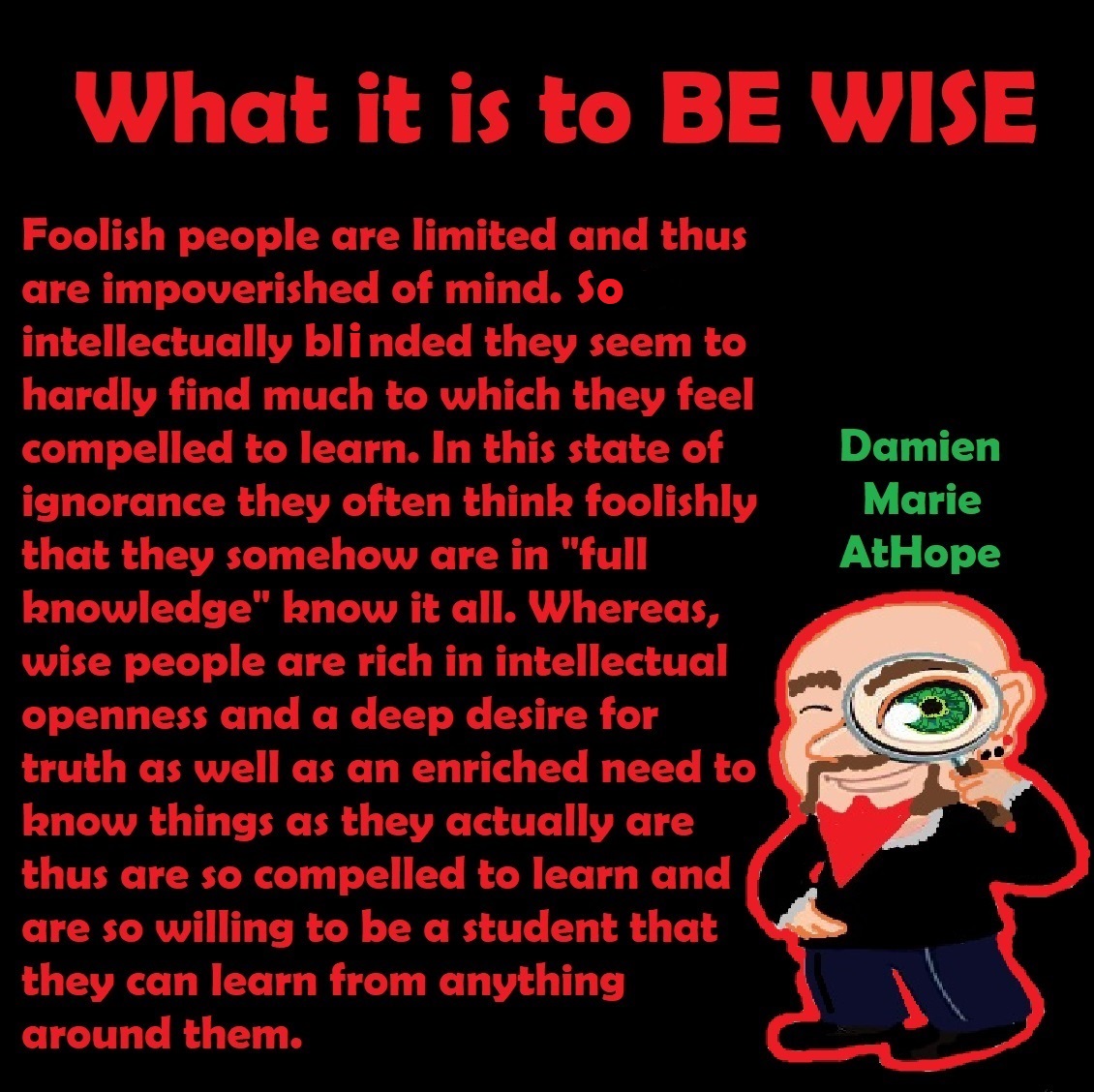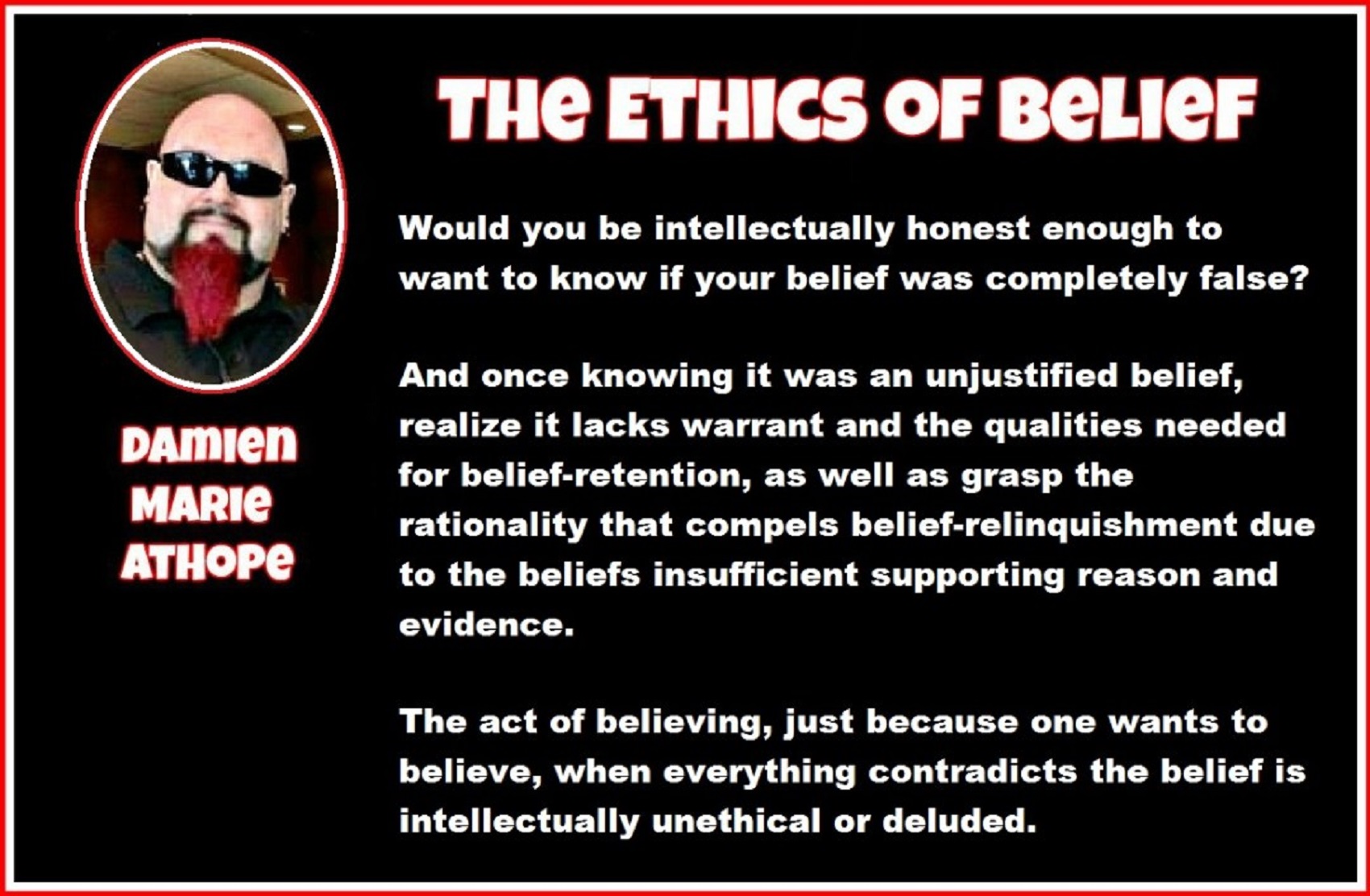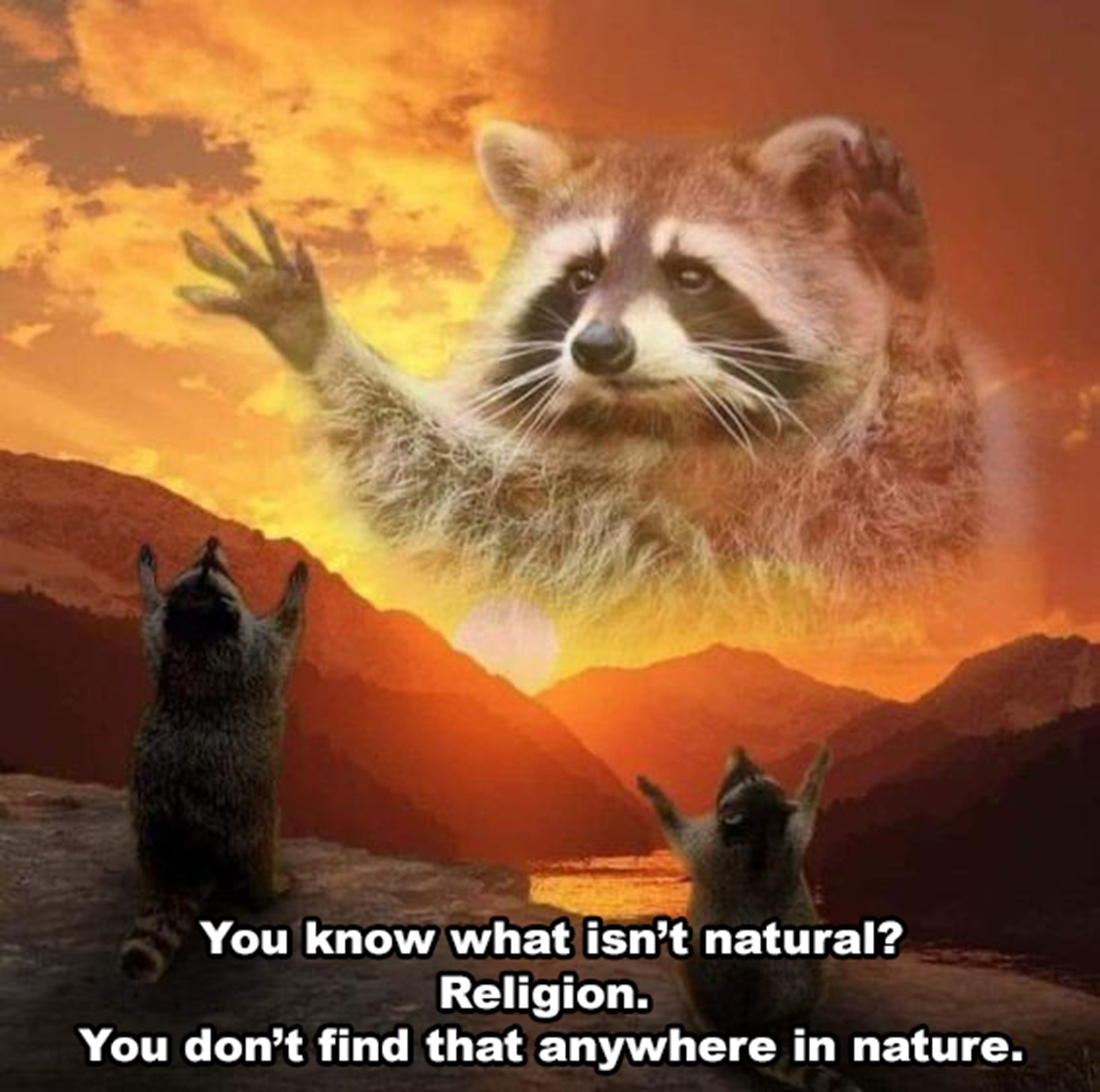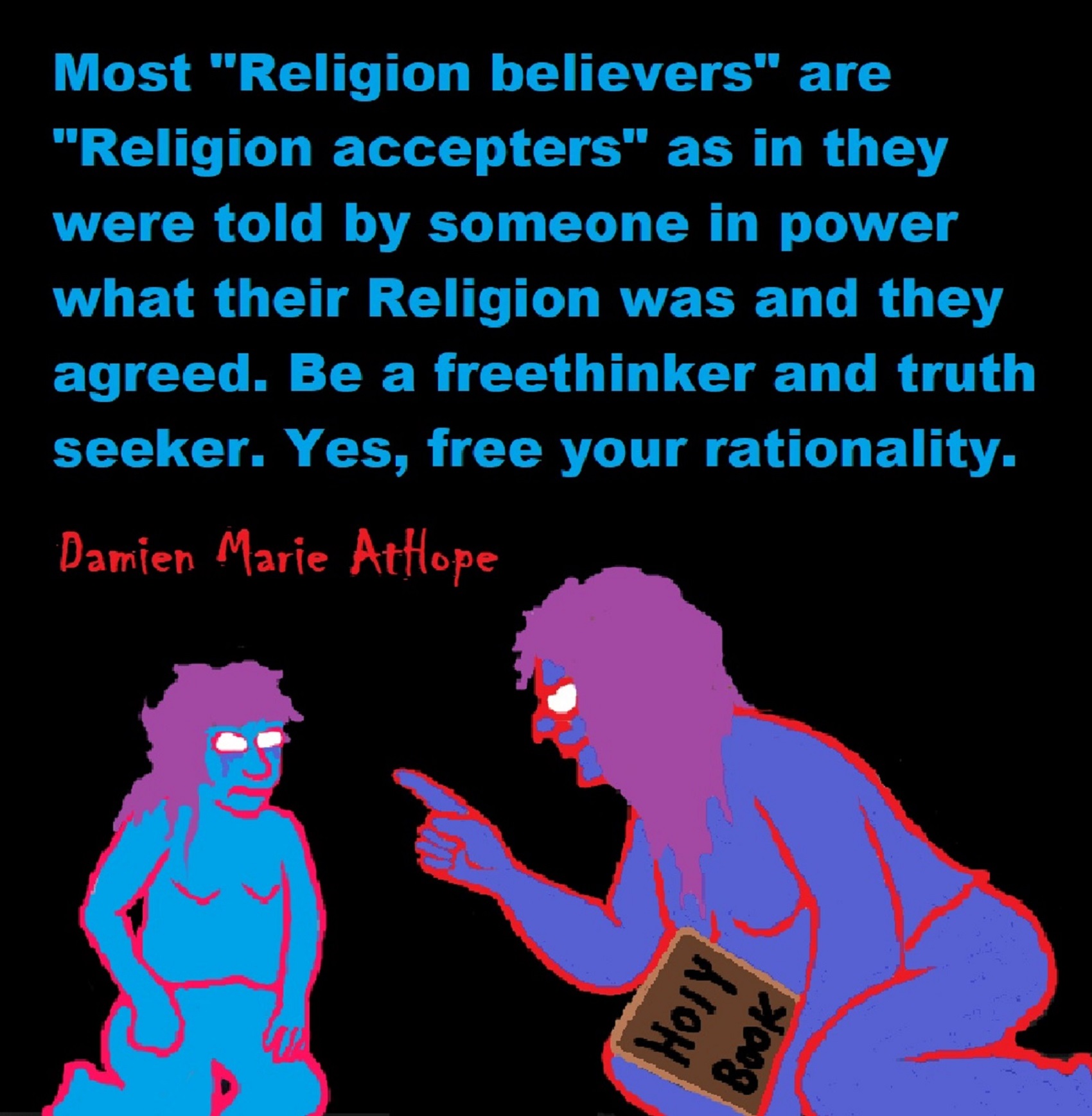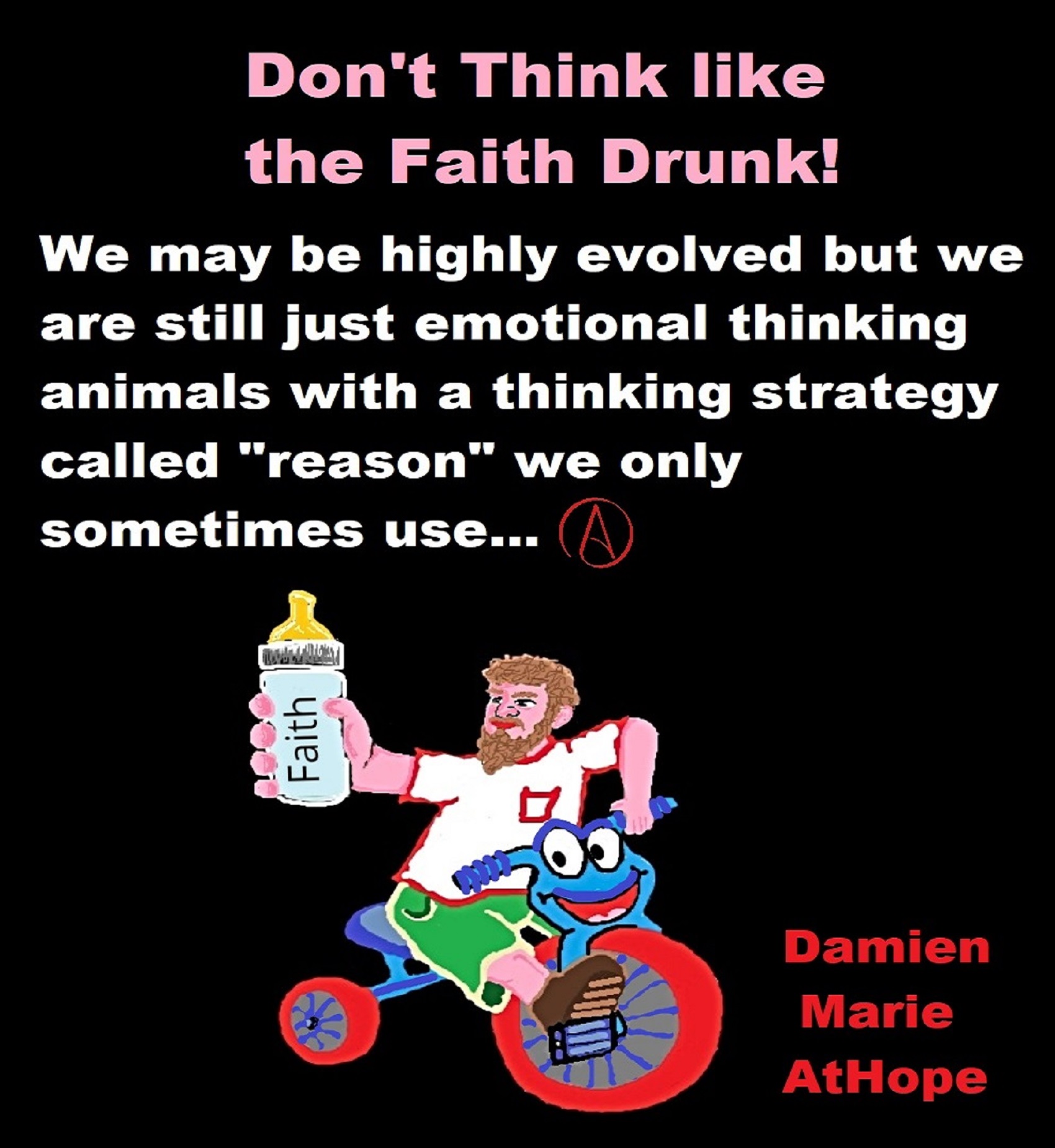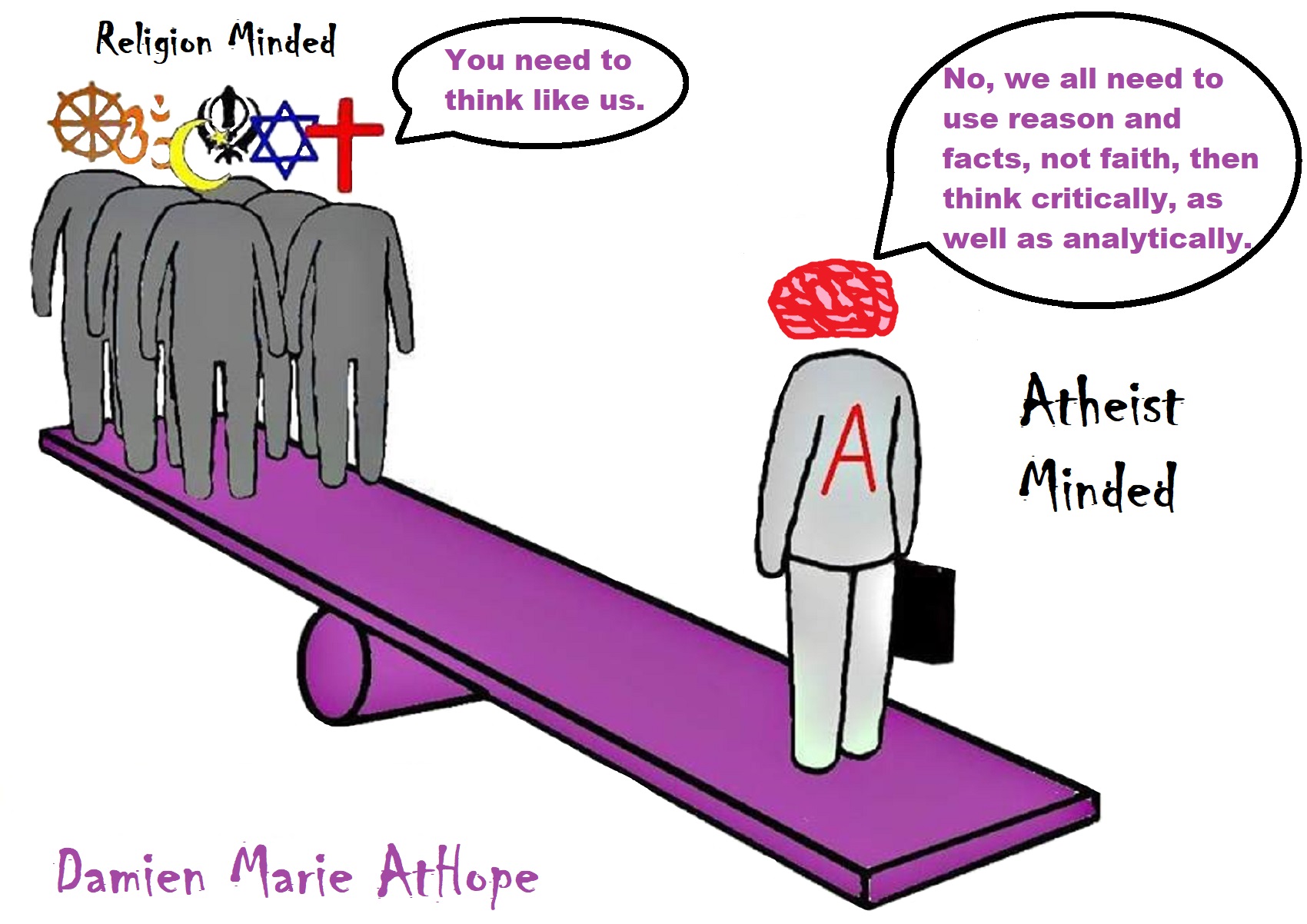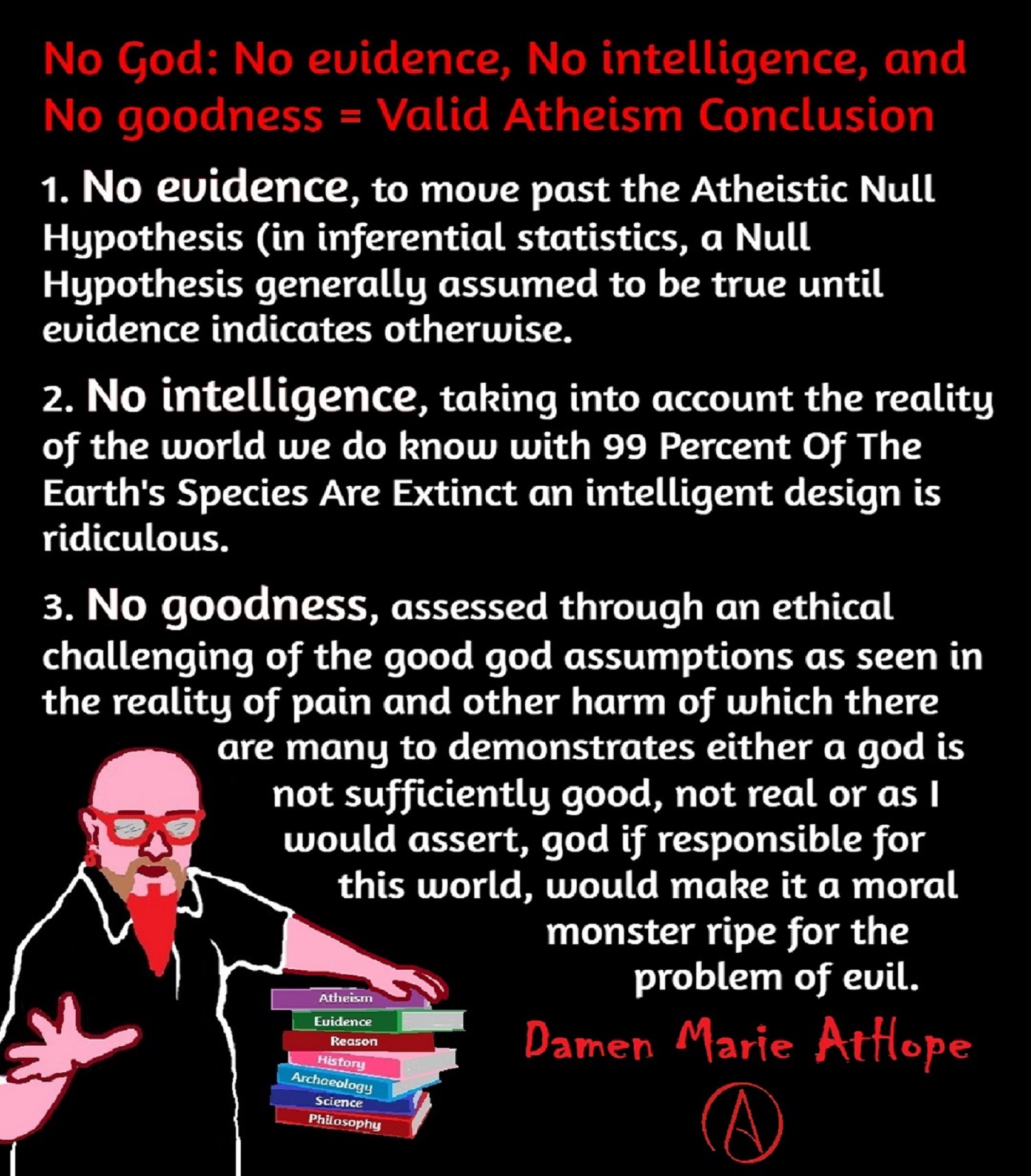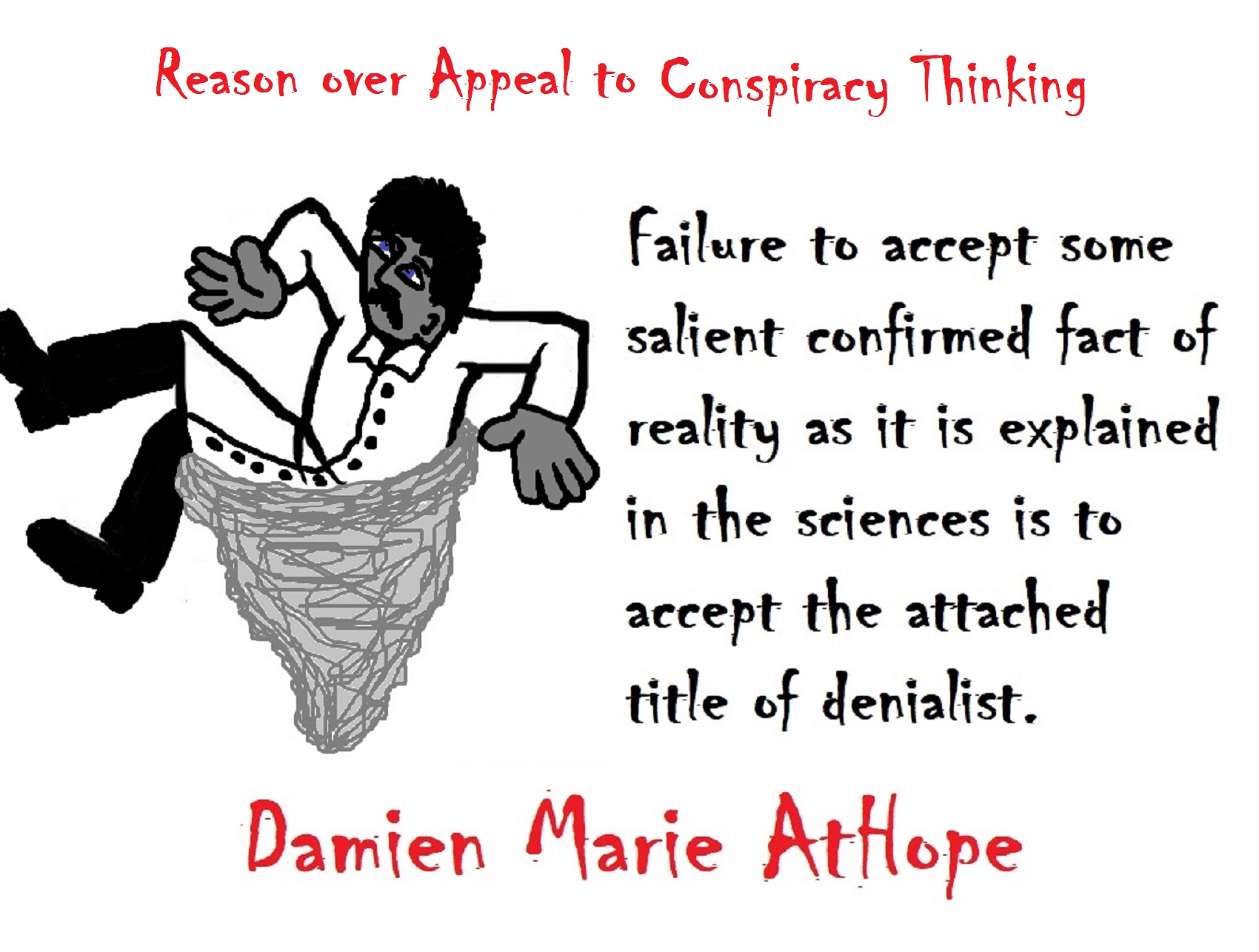
Creationism is a debunked religious conspiracy theory.
Creationism is a debunked religious conspiracy theory, just like its wolf in sheep’s clothing cousin, intelligent destine. The theory of evolution originated with Charles Darwin but left hypothesis, when it was supported by study of DNA combined with physical evidence. Creationism debunking examples which support the Theory of Evolution are a universality in the worlds genetic code along with cross species genetic commonalities. While it is scientifically understandable to grasp that we share DNA with great apes including orangutans, chimpanzees, gorillas, and bonobos; which can share up to approximately 98% of human DNA but it does not end there by a long shot. Humans also share DNA with other animals, as we all evolved together in a since or more accurately share common evolutionary ancestors. You may be amazed to learn mice seemingly so different then us can share up to approximately 90% of human DNA, dogs can share up to approximately 80% of human DNA but then all mammals have a DNA similarity; in fact, we share DNA genes with plants and with every other living organism. This is very strong evidence for a common ancestor from which all life descended; because of DNA evidence that appears to be shared by all life on Earth. Then there is the other very strong proof of the fossil record, from the simplest fossils in the oldest rocks to the vast amount of skeletal remains all accumulatively supporting evolution again and again. Therefore, evidence supporting evolution presented must be added with so many other things that could not just fill a book on its own, like common traits in embryos, extra. The terrain of evidence supporting the theory of evolution is so vast it is less like a mountain of evidence, than a mountain range of evidence from multiple areas of science creating a unified whole. Moreover, there is simply so much more valid and reliable reason and evidence confirming the theory of evolution that to reject evolution, is paramount to one accepting that they can be view as a discredited unscientific magical conspiracy theorist.
Ref: http://education.seattlepi.com/animals-share-human-dna-sequences-6693.html
By Damien Marie Athope
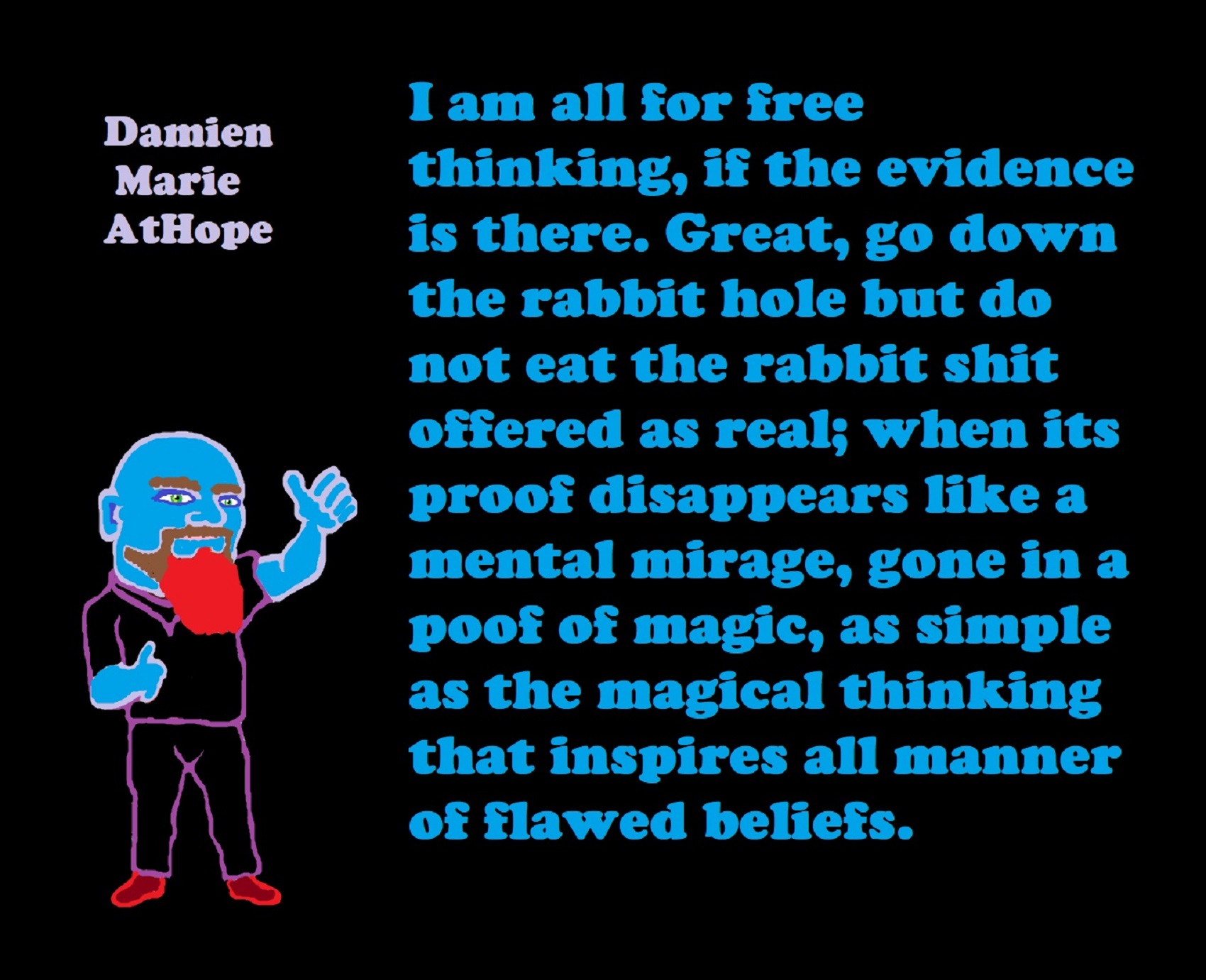
“Scientific” Creationism as a Pseudoscience
National Center for Science Education, Inc.
The highly influential philosopher of science, Sir Karl Popper, in his now classic The Logic of Scientific Discovery(1959), focuses upon one major criterion for distinguishing between legitimate science and pseudoscience. He labels this criterion falsifiability and contends that any theory claiming a legitimate scientific status must be, at least in principle, falsifiable. That is, there must be some conceivable observation that could disprove the theory. It is most relevant to note that Popper explicitly recognizes that a legitimate scientific theory may be falsifiable in principle but, due to limitations of time, space, or technology, unfalsifiable in practice. I think it is safe to say, in light of the extensive references to Popper’s work throughout the whole spectrum of the professional literature, that for most modern scientists and philosophers of science Popper’s concept of falsifiability has come to completely replace the concept of proof as the major criterion for evaluating the worth of scientific theories. It is now generally recognized that the concept of proof was improperly transferred from the domains of pure mathematics and logic, where it still retains its legitimacy, to the realm of the empirical sciences. We now realize that no legitimate scientific theory can be proven in any kind of absolute sense.
The reason for this is basically a logical one. Given that every theory is a product of human reason and thus potentially fallible, it, therefore, follows that there is always the possibility that someone may develop a superior theory—that is, one that explains more or one that explains better. Hence, as long as there is this logical possibility, we can never say of any existing theory that it has been proven in any absolute sense. (In fact, it is really superfluous to qualify the word proof with the modifier absolute.) Hence, when we do run across the use of the term proof, or some variation on it, either in the older literature or in the current writings of those few who have not been exposed to Popper’s influence, we should automatically translate the language into a form consistent with this modern view. For example, the claim that some theory has been “proven” should be read to say no more than that there is “overwhelming evidence” supportive of the theory. In light of the foregoing, it is in a very basic sense illogical or reflective of a deep ignorance of the modern philosophy of science to demand that any theory must be proven before it can be considered legitimately scientific. Yet, one of the most persistent claims to be found in the literature of “scientific” creationism is the contention that the theory of evolution is not a valid scientific theory because it has not been “scientifically proven” (see, for example, Morris et al. 1974:4; Wysong, 1976:44). This contention is, incidentally, quite often framed in a vocabulary that creationists have evidently brought with them from their common grounding in fundamentalist theology. Just as nonfundamentalists are dismissed as not being “true” Christians, so, in a parallel exercise in word magic, evolutionary scientists are held to not be practicing “true” science. The briefest of analyses soon reveals that “true” Christianity and “true” science are simply Christianity and science as defined by fundamentalists and “scientific” creationists, respectively, with a total disregard for any definitions offered by nonfundamentalists and “nonscientific” creationists to the effect that “scientific” creationism enjoys some sort of scientific validity simply because a number of its advocates have earned degrees in various sciences—as if the conferring of such a degree somehow magically transforms one’s religious convictions into scientific propositions (see, for example, Morris et al. 1974:8; Wysong, 1976:21). Returning to Popper’s concept of falsifiability and its role in the evaluation of scientific theories, it is important to note that Popper pointed out that a theory is to be judged just as much for what it predicts will not occur as for what it predicts will occur. In other words, a legitimately scientific theory not only predicts various allowable observable events but also forbids the occurrence of a whole domain of possible events. While the occurrence of one of the allowable events does not prove the theory (because the same event could have been predicted by other theories as well), the occurrence of one of the forbidden events does falsify it. (It should be pointed out, however, that, when confronted with one or a few such falsifying events, a theory that has withstood numerous attempts at falsification and which has no serious, legitimately scientific competitor, will still be retained, in spite of such anomalies.)
Let us now consider how “scientific” creationism on the one hand and the theory of evolution on the other stand up to the criterion of falsifiability. Here we shall see the most basic reason why “scientific” creationism is forever doomed to remain in the realm of pseudoscience. By definition, “scientific” creationism is irrevocably grounded in an appeal to the existence and operation of an obviously omnipotent supernatural being—that is, a being that by its very nature is capable of virtually anything. It, therefore, follows that there is literally no conceivable observation that cannot be reconciled with the virtually limitless actions of such a being. “Scientific” creationism thus lacks the central defining characteristic of all modern scientific theories. It is absolutely immune to falsification. Literally, any problem confronted by “scientific” creationism as it is applied to the empirical world can be resolved through an appeal to unknown and unknowable supernatural operations. And although “scientific” creationists are extremely fond of pointing out various alleged problems with the theory of evolution (problems that are more often than not the result of their own strawman conceptions of both science and evolution), they appear to remain blissfully ignorant of the fact that any legitimate scientific theory must generate problems. (Apparently, once again under the influence of their theology, “scientific” creationists feel that “true” science is some kind of quest for absolute certainty—a conception of science that is totally rejected by Popper.) It is extremely important to emphasize again that “scientific” creationism is not, as is the case with some legitimately scientific theories, only unfalsifiable in practice; it is also unfalsifiable in principle. The same point can be expressed in another way. Science is concerned with explaining why the world is one way rather than some other way. The introduction of an omnipotent supernatural being into any explanation immediately precludes this possibility. As the scriptures tell us, “With God, all things are possible.” This may be fine theology, but it stands in direct opposition to the central goal of all science. This is why “scientific” creationism actually acts as a brake on any valid scientific research. It is really what Gillespie characterizes as an antitheory—a void which has the function of knowledge but which conveys none (1979, p. 8). I will illustrate this diametric difference between legitimate science and the “true” science of “scientific” creationism with an example from the field of biological anthropology.
According to the theory of evolution , s it has been applied to the development of the Primate Order, the chimpanzees represent our closest living relatives. This conclusion was based upon comparative anatomy and the principle that similarities in form reflect evolutionary relationship. Once again, this cannot be said to be a “proof” of the postulated evolutionary relationship. Biologists can cite many instances of parallel evolution in which forms that are only distantly related have developed similarities in structure—for example, the almost identical structures of human and octopus eyes. However, the recently developed techniques for measuring the detailed structure of the most basic molecules of life, DNA and protein molecules, have provided a potential means of falsifying the theory of evolution or at least this particular implication of that theory. Simply consider the two extremely opposed possible research results: on the one hand, it could have conceivably turned out that humans and chimpanzees were totally dissimilar in their molecular structures; on the other hand, it could have been found—as it was—that humans and chimps are practically identical in those structures. (Indeed, in the molecules so far compared, the identity has been found to be over 99 percent.) Had the former situation been found, it would have constituted a falsification of the postulated close evolutionary relationship between humans and chimpanzees. Were there to be similar discoveries throughout the whole range of postulated evolutionary relationships, this would constitute a severe, perhaps even fatal, blow to the entire evolutionary edifice. In point of fact, as now has been well established, the findings of such molecular comparisons have provided overwhelming support for the evolutionary relationships postulated initially on the basis of comparative anatomy. Now consider the alternative responses of “scientific” creationists to these same two possibly opposing research findings. Had the molecular researchers found that human and chimpanzee DNA and protein structures were totally dissimilar, the “scientific” creationists would not have been able to contain themselves. They would have been shouting from the rooftops that this was “proof” positive of the validity of “scientific” creationism—that this finding revealed clear evidence of the creator’s intention to keep distinct the “created kinds.” As it is, of course, the research results were just the opposite. Now, we may safely anticipate that “scientific” creationists will be arguing that this finding, too, is just as their “model” would have predicted, that what we have here is clear evidence of the creator’s grand common design. Heads I win; tails you lose. Now, it can be appreciated why “scientific” creationists, in setting up their debates around the world, are so fond of framing those debates around some variation on the question: “Does evolution or creation provide a better explanation of the scientific evidence?” Invariably, the “scientific” creationists glibly slide over the fact that scientific evidence is only scientific if it is viewed from the framework of science—a framework that, as we have seen, excludes appeals to the supernatural. Thus, in one recent presentation of the creationist position, we are informed of the “fact” that “the Creation Model fits the real facts of science at least as well as the Evolution Model” (Morris and Parker, 1982, xiv; emphasis added). Note, incidentally, the word magic implicit in the use of the qualifier real to imply that any “facts of science” which either do not support creationism or which do support evolution are not “real” scientific facts—the qualifier real is the functional equivalent of true in the writings of fundamentalist “scientific” creationists. Thus, “scientific” creationists consistently argue that creationism provides a better explanation than does the theory of evolution.
And in this, they are in a very limited sense absolutely correct. Given an omnipotent supernatural creator, virtually anything can be “explained” as a result of that creator’s actions and desires. The problem is, of course, that such an “explanation” is not a scientific one, and it is totally dishonest to imply that it is by framing the question at issue in terms of “scientific facts.” In my own debating experience with Duane Gish of the Institute for Creation Research, when I raised this issue, he neatly slithered away from the point with an observation to the effect that, whenever he came to debate scientists, he wanted to talk about scientific facts while they wanted to talk philosophy (as if the question of what constitutes a scientific fact is totally unrelated to the philosophy of science). Considerations such as these are almost totally ignored in the writings of “scientific” creationists. Indeed, in one of those unintended ironies with which that literature abounds, Sir Karl Popper is actually cited as a scientific authority who is opposed to the theory of evolution. He was never, of course, a “scientific” creationist; he simply once had some reservations about various aspects of general evolutionary theory. Today, Popper is a full-blown evolutionist, a point conveniently and consistently ignored by those “scientific” creationists who cite his earlier statements. Indeed, when Gish, Bliss, and Bird of the ICR cite a later criticism of Popper’s regarding natural selection (1981, p. i), they even suppress the full title of the book referred to. They identify it in their bibliography as Objective Knowledge when in fact the full title is Objective Knowledge: An Evolutionary Approach (1975). Also conveniently ignored is the fact that, in this very same book, Popper explicitly rejects his earlier criticisms and frames his description of the nature of science in evolutionary language. He speaks, for example, of competing theories in terms of the survival of the fittest. Unlike legitimate scientists, as Popper conceives of them, “scientific” creationists have a highly developed talent for ignoring and even denying any facts that contradict their preconceptions. Wysong, for example, pays lip service to Popper’s criterion of falsifiability (1976, p. 27) and even contends that in evaluating the relative worth of creationism as opposed to the theory of evolution, “each of the propositions must be falsifiable” (1976, p. 49). Lip service having been paid, this is the last we hear of the concept of falsifiability in the remaining 406 pages of his book! Yet, it cannot be denied that “scientific” creationists are enamored of at least the form, if not the substance, of science. One cannot escape the suspicion that if the fundamentalists who provide the overwhelming majority of “scientific” creationists were to adopt a clerical garb it would consist of a lab coat emblazoned with a cross.
At the same time, they are obviously committed to a set of religious dogmas that bring them into direct conflict with one of the most widely accepted theories in all of science: the theory of evolution. Thus, they find themselves in a perpetual double bind. And their attempts to resolve this double bind take the form of an effort to redefine “true” science in such a manner that it no longer conflicts with their cherished fundamentalist dogmas. As a result, they have developed their own little “folk conception” of science, one that is totally subservient to their preconceived fundamentalist theology. Folk conception is a term used by cultural anthropologists to refer to the set of ideas that the people in a particular culture or subculture have about some area of reality. For example, people in different cultures have different folk conceptions of the law, of the proper form of family, of morality, and so forth. However, the folk conception of “true” science developed by “scientific” creationists has about as much resemblance to legitimate science as does astrology to astronomy or witchcraft to medicine. To a great extent it is simply and simplistically an extended exercise in two old debater’s tactics: begging the question (that is, seeking to define the point at issue in such a manner so as to win the debate by definition) and the strawman argument (that is, misdefining your opponent’s position in such a way as to guarantee its easy destruction) combined with liberal doses of word magic. Word magic is a typical feature of primitive closed thought systems in which it is commonly believed that words have the power to create or affect the things for which they stand (see, Horton, 1967). In coming up with their definitions of “true” science, “scientific” creationists virtually never rely upon the writings of philosophers of science. At best, their definitions began as unjustified extrapolations from dictionary definitions, usually combined with out-of-context quotes gleaned from the writings of evolutionary scientists (see, for example, Gish, 1973, p 2; and, for particularly simple-minded definitions of science and the scientific method, Wysong, 1976, pp. 40-43). One omnipresent characteristic of “scientific” creationists’ folk definitions of science is the contention that “true” science cannot address itself to the explanation of any event that occurred before there were any scientists present to observe it (see, for example, Morris et al. 1974, pp. 4-5; Gish, 1973, p. 3; Wysong, 1976, p. 43; Morris and Parker, 1982, xiii). One can see the obvious fundamentalist theological motivations that underlie this particular begging of the question. In one fell swoop, by definition, evolutionary studies, historical geology, and much of astronomy are automatically excluded from the domain of legitimate science.
Before dealing with the shortcomings of this particular attempt to restrict the range of science, it is most significant to note that this tactical maneuver also automatically excludes “scientific” creationism from the realm of “true” science. Surprisingly, in an uncharacteristic display of honesty and humility, this is frequently openly conceded by “scientific” creationists themselves. But, this is really a form of copping a plea to a lesser offense as well as being a kind of diversionary tactic. By pretending that they are guilty of some kind of alleged scientific misdemeanor—that is, dealing with events that occurred prior to the existence of scientific witnesses—the “scientific” creationists draw attention away from their actual scientific felony: the utilization of a completely unfalsifiable appeal to the supernatural. Moreover, as we shall see, the alleged misdemeanor to which they so graciously plead guilty turns out on analysis to be no scientific crime at all. Finally, and here we see the schizophrenic element manifesting itself, this admission of a completely nonscientific status for “scientific” creationism is conveniently forgotten in their persistent use of the term scientific creationism in their articles, books, and, indeed, in the very name by which they identify themselves. The contention that “true” science cannot deal with phenomena that occurred before any scientists were present to observe them is based upon two unvoiced and demonstrably false presuppositions. The first and more general false supposition is that science deals only with that which is directly observable—that is, the empirical world. At best, this is only a half-truth (even this is generous—it would probably be more legitimately characterized as an eighth-truth). Science constantly postulates the existence of theoretical forces and entities that are not directly observable. No one has ever actually seen an atom. No one has ever directly observed either electricity or gravity. To even suggest that science cannot deal with unobservables is to display an ignorance of the nature of the scientific enterprise. This is not to say that such unobservables have no relationship to that which can be observed. The legitimacy of postulated theoretical forces and entities is constantly being tested against the observable world. Such testing constitutes a way of attempting to falsify the postulated theoretical entities and forces. Such testing, so crucial to any legitimate science, is, as we have seen, impossible with respect to the omnipotent supernatural being that constitutes the central “theoretical” entity in “scientific” creationism. Indeed, if we once again turn to the writings that provide the ultimate motivation for “scientific” creationism, we are explicitly told, “Thou shall not test the Lord, thy God.” Once again, this may be fine theology, but, if that same God is assigned the function of a theoretical entity in a proposed explanation, this injunction represents a prohibition against the central activity of the scientific enterprise! The second false presupposition that underlies the creationists’ restriction against “true” science saying anything about events that occurred prior to the existence of scientific witnesses is the apparent presumption that such postulated past events will have left no record of their occurrence, no evidence by which theories about that alleged occurrence can be tested. This is analogous to arguing that, because there were no actual witnesses, we can never “truly” scientifically know if the bear actually did defecate in the woods—this despite the presence of a steaming pile of bear fecal material and numerous bear footprints. Likewise, we would have to deny, in spite of the superabundant fossil evidence, “true” scientific legitimacy to the claim that vast numbers of new extinct species once roamed the earth, simply because there were no scientists present to directly observe them.
When confronted with such criticisms of their theologically motivated folk conception of science, “scientific” creationists commonly resort to another tactic popular among debaters: equivocation. This is the practice of switching definitions of a key word or concept in mid-argument. By far one of the master practitioners of this art is Henry M. Morris, director of the ICR. Faced with attacks on the scientific legitimacy of “scientific” creationism, Morris invariably ignores the substance of those attacks and argues that “true” science simply means “knowledge” (Morris et al. 1974, p. 1; cf. Morris 1982, p. i; Morris and Parker, 1982, xiii). In a very restricted sense, Morris is correct. If we look up the etymology of the word science, we do indeed find that in the original Greek form it did mean “knowledge.” The problem here is that words very often cannot be simplistically defined solely in terms of their etymology. Language itself evolves. Words, in the history of their usage, often undergo radical revisions in their accepted meanings. One would expect that a self-proclaimed biblical expert such as Morris pretends to be would be quite cognizant of this elementary fact. In Darwin’s day, for example, the word science referred to philosophy or knowledge derived from nonrevealed sources (Himmelfarb, 1959, p. 36). Scientists were then referred to not as scientists but as natural philosophers. To this day, teachers in the natural sciences in universities are assigned the academic rank of “professor of natural science” (even a number of “scientific” creationists claim this title—although what they advocate is anything but “natural” science). Even the dictionary, the primary source of “scientific” creationists’ misconceptions of science, identifies science and natural science as synonyms of one another. All of this is, once again, conveniently ignored when “scientific” creationists accuse scientists of begging the question in denying the mantle of science to claims which invoke the supernatural. Instead, it is held that “scientists are supposed to ‘search for truth’ wherever that search leads” (Morris and Parker, 1982, xiii). Totally disregarded in this hopelessly naive conception of “true” science is the fact that it would require scientists to spend innumerable hours in the consideration of multitudes of supernaturalistic “explanations” that are intrinsically unfalsifiable. Furthermore, if we were to accept the equation of science with knowledge, then every field of knowledge, from stamp collecting to polishing shoes, would have to be considered a legitimate science. The issue of the proper definition of what constitutes legitimate science, as well as many ether issues in the evolution-creation controversy, boils down in many ways to an argument over proper authority. Confronted with the undeniable fact that the overwhelming majority of scientists in general, and certainly practically all life scientists, do accept the scientific legitimacy of the theory of evolution, “scientific” creationists frequently include in their folk definitions of science the claim that scientific truths are not established through some kind of majority rule or popular vote (see, for example, Wysong, 1976, pp. 20-21). In this claim, they are, as usual, wrong.
If students of the nature of science are in agreement on anything, it is that science is a communal activity. The individual scientist may indeed formulate a particular theory explaining some phenomenon. But that explanation does not really enter the domain of science until it has been scrutinized, criticized, and tested by his or her colleagues in the relevant discipline. And, when the colleagues in a particular scientific discipline are in well-nigh complete agreement on the validity of some given explanation, it comes close to a form of scientific lunacy to proclaim the learned majority opinion wrong and to advocate some explanation that they emphatically reject. This is not to say that the majority is always right. As “scientific” creationists and advocates of other pseudoscientific explanations never tire of pointing out, there have been a number of explanations that at one time have been rejected by the scientific community only to have later been demonstrated to be valid. Invariably ignored by those who make this argument is the fact that the number of such cases is miniscule compared to the number of cases in which the original negative judgment of the scientific community was subsequently and totally corroborated. Indeed, in the twisted logic of this sort of argument, it would seem that the truth value of any idea increases with the degrees to which it is rejected by the scientific community! It is also revealing to note that, in their own fundamentalist educational institutions and in direct contrast to the accepted practice in science, such minority or dissenting opinions are allowed no expression whatsoever. It is difficult to imagine any alternative to a kind of majority rule by experts in the evaluation of the worth of scientific ideas. What better guideline can there be than to at least tentatively accept the authority of a body of experts on any given subject matter? If I go to a thousand auto mechanics and 999 of them tell me I have a cracked engine block while one, who claims to be in contact with aliens from another universe, contends that my problems flow from my having offended Sydney the avocado spirit, whom am I to believe? In a parallel manner, if we follow the lead of the “scientific” creationists regarding their confrontation with evolutionary scientists, I am to reject the authority of the entire scientific community and to accept the claims of a group who openly admit that their ultimate commitment is not to a quest for the truth but to the propagation of an alleged truth already divinely revealed.
Consider the words of Henry Morris on the question of the historicity of the universal flood as it relates to geology:
But the main reason for insisting on the universal Flood as a fact of history and as the primary vehicle for geological interpretation is that God’s Word plainly teaches it! No geological difficulties, real or imagined, can be allowed to take precedence over the clear statements and necessary inferences of Scripture. [1970, p. 33; emphasis added)
It would be difficult to formulate a statement that could stand in greater opposition to the central spirit of modern science. But this same Henry Morris actually had the gall, several years ago, to stand at the pulpit of Jerry Falwell’s church, after having been introduced as “Mr. Creationism,” and proclaim that the media were misrepresenting the conflict between “scientific” creationism and evolution as a conflict between religion and science. The congregation, instead of falling out of their pews with laughter at the blatant incongruity of such a statement in such a context, sat there piously nodding their approval. Comedian George Carlin has observed that there are some words that just don’t seem to go together. He gives as examples the terms jumbo shrimp and military intelligence. I think that there can be little doubt that the top honors for such contradictions-in-terms should go to scientific creationism.
References
Gillespie, Neal C. 1979. Charles Darwin and the Problem of Creation. Chicago: The University of Chicago Press.
Gish, Duane T. 1973. Evolution: The Fossils Say No! San Diego: Creation-Life Publishers.
Himmelfarb, Gertrude. 1959. Darwin and the Darwinian Revolution. New York: W. W. Norton and Co., Inc.
Horton, Robin. 1967. “African Traditional Thought and Western Science.” In Africa and Change, C. M. Turnbull, editor, New York: Alfred Knopf; pp. 454-519.
Morris, Henry M. May 1982. “Evolution Is Religion, Not Science.” Impact, i-iv.
——. 1970. Biblical Cosmology and Modern Science. Nutley, NJ: The Craig Press.
Morris, Henry M., et al. 1974. Scientific Creationism (General Edition). San Diego: Creation-Life Publishers.
Morris, Henry M., and Parker, Gary E. 1982. What Is Creation Science? San Diego: Creation-Life Publishers.
Popper, Karl R. 1975. Objective Knowledge: An Evolutionary Approach. Oxford: Clarendon Press.
——. 1959. The Logic of Scientific Discovery. New York: Basic Books, Inc.
Wysong, R. L. 1976. The Creation-Evolution Controversy. Midland, MI: Inquiry Press.
I Hate Religion Just as I Hate Pseudoscience
Some atheists don’t like to say they hate religion, may say they hate what religion does, me? I am just cool to say I hate religion just as I hate pseudoscience. Religion is just socially accepted pseudoscience (with tax breaks). After all, the arguments in favor of ghosts, alternative medicine, and ancient aliens, are very similar to the arguments for angels, the “power of prayer” and God. Sleep paralysis and hallucinatory visions are taken to be evidence for ghosts/angels, post-hoc reasoning is used in arguments for alternative medicine/prayer, and “unexplained mysteries” are counted as evidence for aliens/God. Religion is just socially accepted pseudoscience.
The following have broad consensus concerning pseudo-scientific status. See if you can find any religion thinking?
*Astrology refers to any of several systems of understanding, interpreting and organizing knowledge about reality and human existence, based on the relative positions and movement of various real and construed celestial bodies. Planetary alignments are events where two or more planets and the Sun and Moon line up from the perspective of Earth. Much of astrology has been developed around such alignments. Sun signs are astrological signs that are determined by the location of the Sun at a particular moment in time such as an individual’s birth.
*Baraminology is an attempt to create a bible friendly version of species without invoking evolution.
Biblical scientific foreknowledge asserts that the Bible makes accurate statements about the world that science verifies thousands of years later. A favorite of kdbuffalo/Conservative. Suffers from the problem that prophesies should predict the future, not the past. Kind of the whole point.
*Creationist cosmologies are ones which, among other things, allow for a universe that is only thousands of years old. Flood geology is the creationist form of geology that advocates most of the geologic features on Earth are explainable by a global flood. Hydroplate theory is an attempt to explain how an earth-wide flood could occur.
Soft-sediment deformation is the idea that rocks can only be deformed if wet and soft. Intelligent Design is a version of creation science stated in secular terms, viz. that “certain features of the universe and of living things are best explained by an intelligent cause, not an undirected process such as natural selection.” The Banana fallacy is an argument about how things are designed to suit humans while ignoring other explanations such as artificial selection. Irreducible complexity is the claim that some systems are so complex that they cannot have evolved from simpler systems. It is used by proponents of intelligent design to argue that evolution by Natural selection alone is incomplete or flawed, and that some additional mechanism (an “Intelligent Designer”) is required to explain the origins of life. Specified complexity is the claim that when something is simultaneously complex and specified, one can infer that it was produced by an intelligent cause (i.e., that it was designed) rather than being the result of natural processes. Modern geocentrism cites uniform gamma ray bursts distribution as evidence that we are at the center of the universe, and other ideas of this type.
*Creation science is the belief that the origin of everything in the universe is the result of a first cause, brought about by a creator deity, and that this thesis is supported by geological, biological, and other scientific evidence. This “evidence” is either Biblical in nature, or it attacks a tenet of evolution, incorrectly assuming that if any part of evolution is wrong, the whole thing is wrong and creationism is right.
*Crop circles are geometric designs of crushed or knocked-over crops created in a field. Aside from skilled farmers or pranksters working through the night, explanations for their formation include UFOs and anomalous, tornado-like air currents. The study of crop circles is termed “cerealogy” by proponents.
Erich von Däniken’s proposal of ancient astronauts.
*Full moon lunacy is the belief that the full moon is correlated with the manifestation of lunacy.
Non-materialist neuroscience is the attempt to scientifically prove the existence of a “mind,” and is closely related to dualism.
*Hyperdimensional physics is a concept that has been very vaguely described by Tom Bearden. Mike Bara once summed it up as “a rotating body pulls energy from its higher state.” None of the examples he gives are actually valid.
Ufology is the study of unidentified flying objects (UFOs) and frequently includes the belief that UFOs are evidence for extraterrestrial visitors.
*Numerology, is any belief in the divine, mystical relationship between a number and one or more coinciding events. It is often associated with the paranormal, alongside astrology and similar divinatory arts. There is no supporting evidence for the modern practice of numerology in modern science.
*Paranormal beliefs, such as subjects believing they are Channeling, which is the proposed communication of information to or through a person allegedly from a spirit or other paranormal entity. Of things like Dowsing, which refers to practices said to enable one to detect hidden water, metals, gemstones or other objects under the ground. There are also things like Electronic voice phenomenon, which is the alleged communication by spirits through tape recorders and other electronic devices. Or there are things like the so called Extra-sensory perception, which is the paranormal ability (independent of the five main senses or deduction from previous experience) to acquire information by means such as telepathy, clairvoyance, precognition, psychic abilities, and remote viewing. There are also those who believe in the outlandish from Holding back walls of water (Moses in the Jewish faith) walking on water (Jesus in Christianity) to similar things such as flying horses (Muhammad in Islam) or just some other generalized belief in Levitation, which in this sense, is the act of rising up from the ground without any physical aids, usually by the power of thought.
*Psychokinesis is the paranormal ability of the mind to influence matter or energy at a distance.
Spiritualism is a religious movement which holds the belief that communication with the dead can occur through the powers of individuals called mediums. Seances are ritualized attempts to communicate with the dead.
*Torsion field physics is a theory about some new kind of fields that travel much faster than light. Torsion fields are often used to “mathematically describe” other pseudoscientific topics.
*The Face on Mars (in Cydonia Mensae) is a rock formation on Mars asserted to be evidence of intelligent, native life on the planet. Higher resolution images show it to appear less face-like. It features prominently in the pseudoscientific theories of Richard C. Hoagland. Alien abductions are events where people claim to have been taken into a spaceship for medical experiments by aliens before being returned to earth. Close encounters are events where persons witness UFOs, or purportedly meet and/or communicate with alien beings. Immanuel Velikovsky’s proposals that ancient texts refer to the collision of astronomical bodies as in Worlds in Collision. Etc.
http://rationalwiki.org/wiki/List_of_pseudosciences
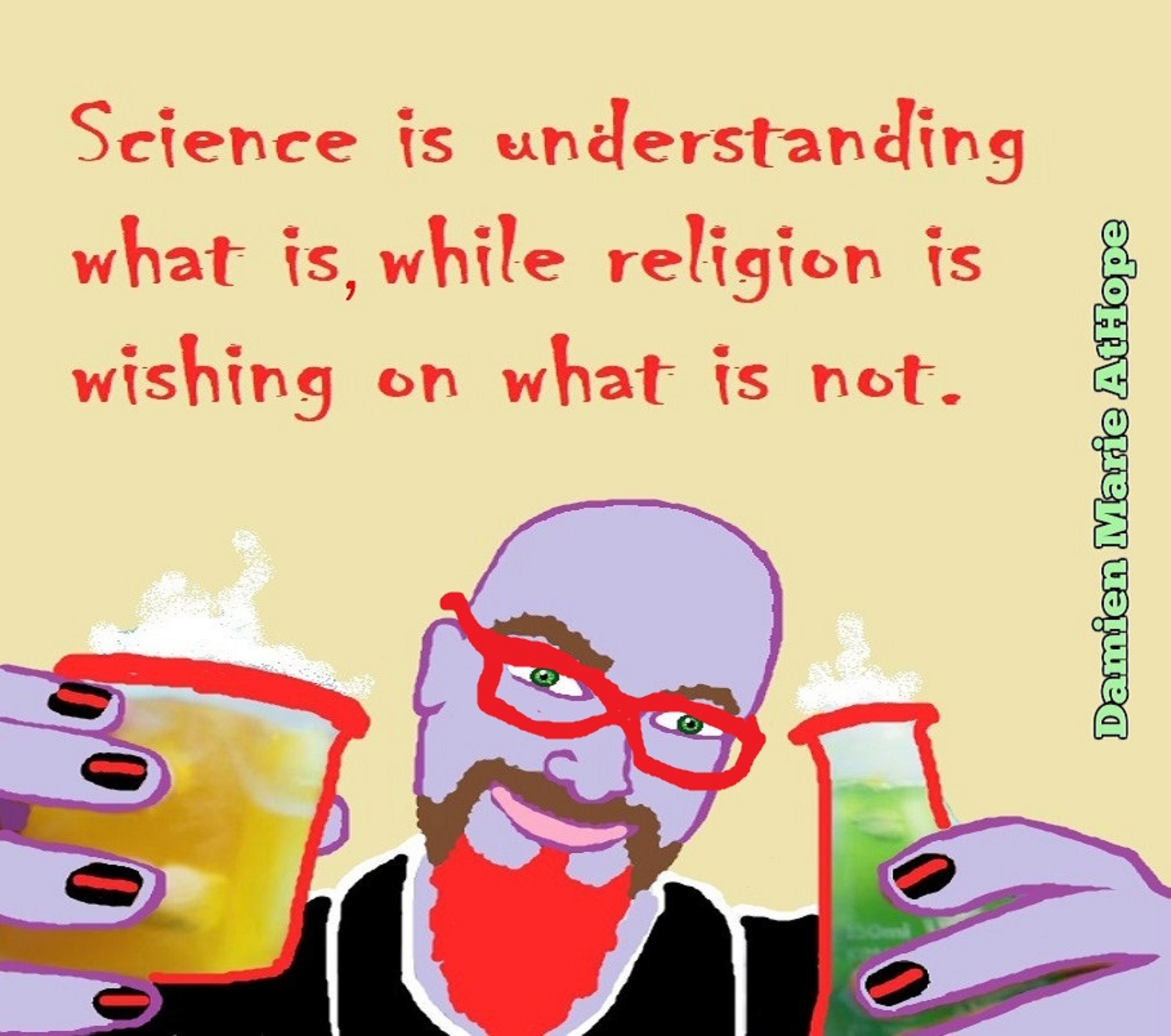
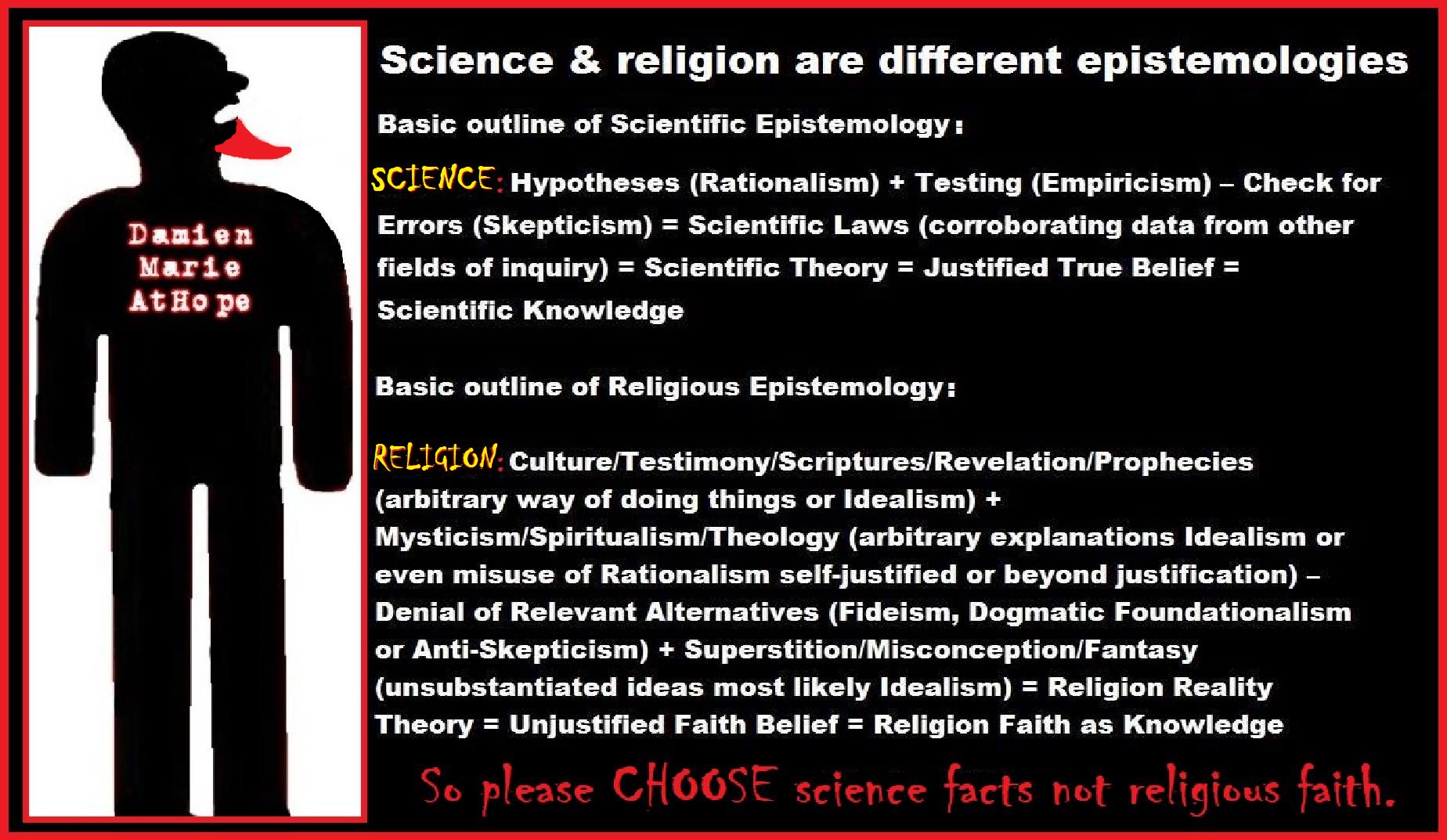
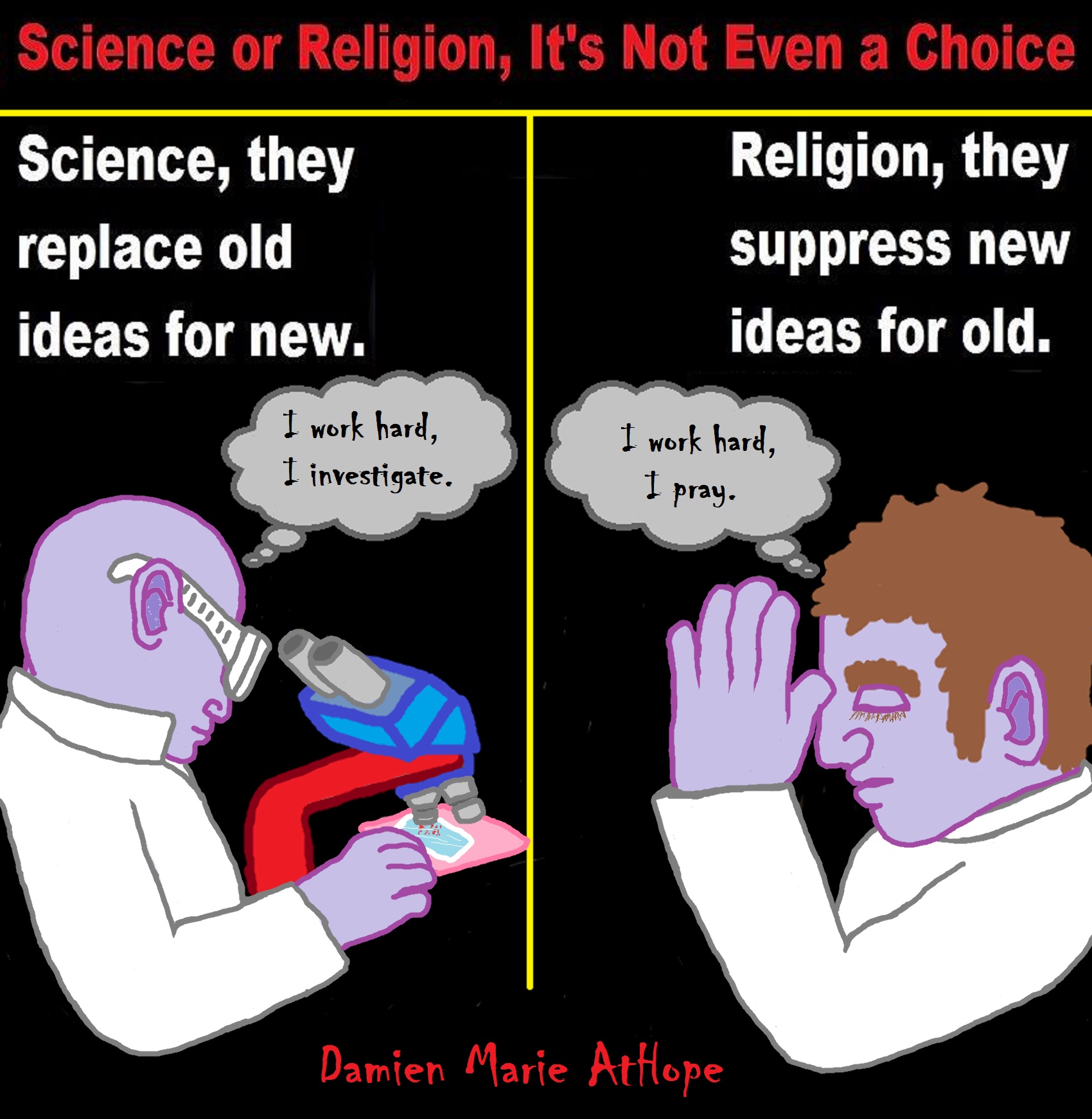
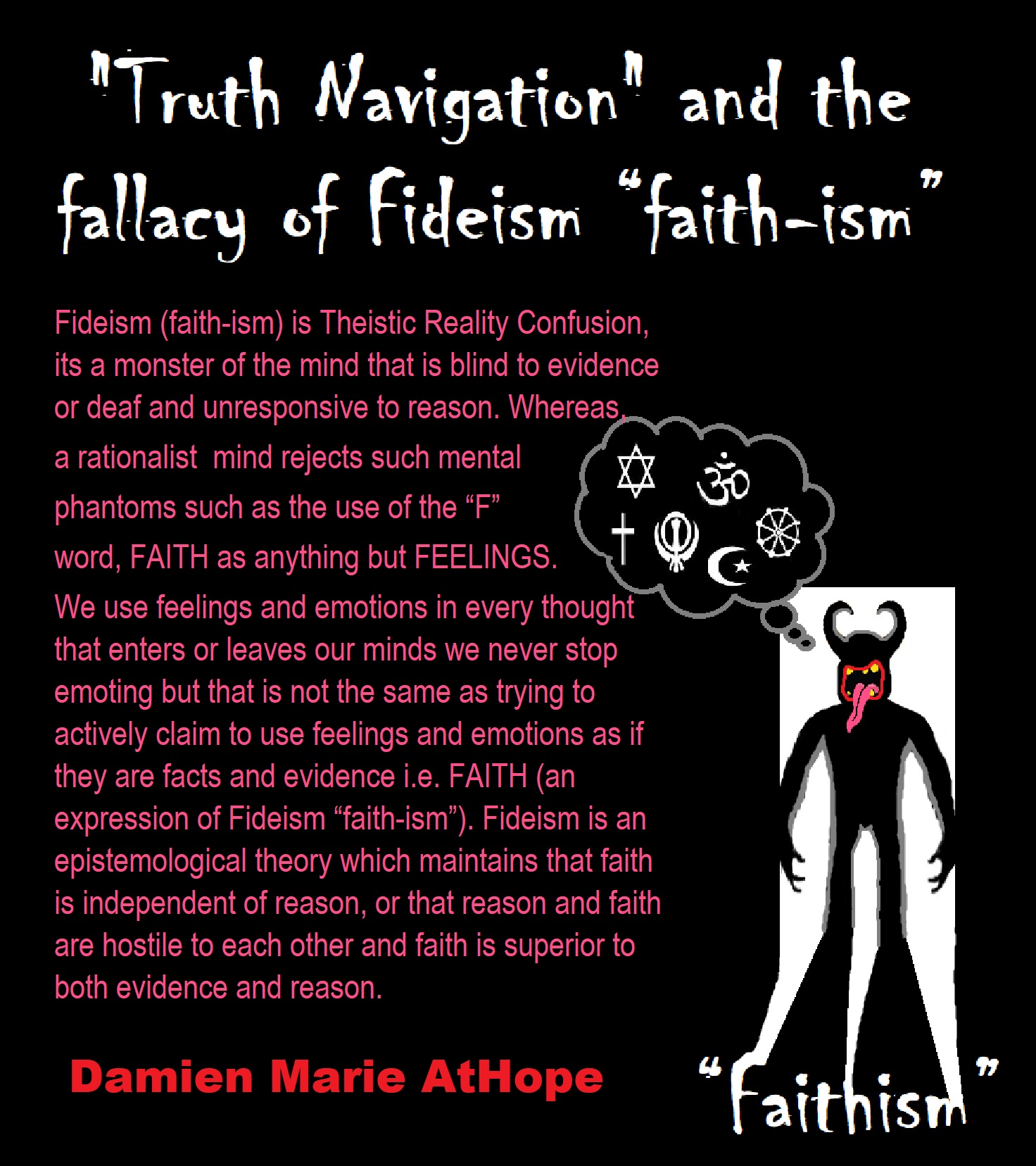
15 Answers to Creationist Nonsense By John Rennie from the magazine: SCIENTIFIC AMERICAN
Opponents of evolution want to make a place for creationism by tearing down real science, but their arguments don’t hold up.
When Charles Darwin introduced the theory of evolution through natural selection 143 years ago, the scientists of the day argued over it fiercely, but the massing evidence from paleontology, genetics, zoology, molecular biology and other fields gradually established evolution’s truth beyond reasonable doubt. Today that battle has been won everywhere–except in the public imagination.
Embarrassingly, in the 21st century, in the most scientifically advanced nation the world has ever known, creationists can still persuade politicians, judges and ordinary citizens that evolution is a flawed, poorly supported fantasy. They lobby for creationist ideas such as “intelligent design” to be taught as alternatives to evolution in science classrooms. As this article goes to press, the Ohio Board of Education is debating whether to mandate such a change. Some antievolutionists, such as Philip E. Johnson, a law professor at the University of California at Berkeley and author of Darwin on Trial, admit that they intend for intelligent-design theory to serve as a “wedge” for reopening science classrooms to discussions of God.
Besieged teachers and others may increasingly find themselves on the spot to defend evolution and refute creationism. The arguments that creationists use are typically specious and based on misunderstandings of (or outright lies about) evolution, but the number and diversity of the objections can put even well-informed people at a disadvantage.
To help with answering them, the following list rebuts some of the most common “scientific” arguments raised against evolution. It also directs readers to further sources for information and explains why creation science has no place in the classroom.
1. Evolution is only a theory. It is not a fact or a scientific law.
Many people learned in elementary school that a theory falls in the middle of a hierarchy of certainty–above a mere hypothesis but below a law. Scientists do not use the terms that way, however. According to the National Academy of Sciences (NAS), a scientific theory is “a well-substantiated explanation of some aspect of the natural world that can incorporate facts, laws, inferences, and tested hypotheses.” No amount of validation changes a theory into a law, which is a descriptive generalization about nature. So when scientists talk about the theory of evolution–or the atomic theory or the theory of relativity, for that matter–they are not expressing reservations about its truth.
In addition to the theory of evolution, meaning the idea of descent with modification, one may also speak of the fact of evolution. The NAS defines a fact as “an observation that has been repeatedly confirmed and for all practical purposes is accepted as ‘true.'” The fossil record and abundant other evidence testify that organisms have evolved through time. Although no one observed those transformations, the indirect evidence is clear, unambiguous and compelling.
All sciences frequently rely on indirect evidence. Physicists cannot see subatomic particles directly, for instance, so they verify their existence by watching for telltale tracks that the particles leave in cloud chambers. The absence of direct observation does not make physicists’ conclusions less certain.
2. Natural selection is based on circular reasoning: the fittest are those who survive, and those who survive are deemed fittest.
“Survival of the fittest” is a conversational way to describe natural selection, but a more technical description speaks of differential rates of survival and reproduction. That is, rather than labeling species as more or less fit, one can describe how many offspring they are likely to leave under given circumstances. Drop a fast-breeding pair of small-beaked finches and a slower-breeding pair of large-beaked finches onto an island full of food seeds. Within a few generations the fast breeders may control more of the food resources. Yet if large beaks more easily crush seeds, the advantage may tip to the slow breeders. In a pioneering study of finches on the Galápagos Islands, Peter R. Grant of Princeton University observed these kinds of population shifts in the wild [see his article “Natural Selection and Darwin’s Finches”; Scientific American, October 1991].
The key is that adaptive fitness can be defined without reference to survival: large beaks are better adapted for crushing seeds, irrespective of whether that trait has survival value under the circumstances.
3. Evolution is unscientific, because it is not testable or falsifiable. It makes claims about events that were not observed and can never be re-created.
This blanket dismissal of evolution ignores important distinctions that divide the field into at least two broad areas: microevolution and macroevolution. Microevolution looks at changes within species over time–changes that may be preludes to speciation, the origin of new species. Macroevolution studies how taxonomic groups above the level of species change. Its evidence draws frequently from the fossil record and DNA comparisons to reconstruct how various organisms may be related.
These days even most creationists acknowledge that microevolution has been upheld by tests in the laboratory (as in studies of cells, plants and fruit flies) and in the field (as in Grant’s studies of evolving beak shapes among Gal¿pagos finches). Natural selection and other mechanisms–such as chromosomal changes, symbiosis and hybridization–can drive profound changes in populations over time.
The historical nature of macroevolutionary study involves inference from fossils and DNA rather than direct observation. Yet in the historical sciences (which include astronomy, geology and archaeology, as well as evolutionary biology), hypotheses can still be tested by checking whether they accord with physical evidence and whether they lead to verifiable predictions about future discoveries. For instance, evolution implies that between the earliest-known ancestors of humans (roughly five million years old) and the appearance of anatomically modern humans (about 100,000 years ago), one should find a succession of hominid creatures with features progressively less apelike and more modern, which is indeed what the fossil record shows. But one should not–and does not–find modern human fossils embedded in strata from the Jurassic period (144 million years ago). Evolutionary biology routinely makes predictions far more refined and precise than this, and researchers test them constantly.
Evolution could be disproved in other ways, too. If we could document the spontaneous generation of just one complex life-form from inanimate matter, then at least a few creatures seen in the fossil record might have originated this way. If superintelligent aliens appeared and claimed credit for creating life on earth (or even particular species), the purely evolutionary explanation would be cast in doubt. But no one has yet produced such evidence.
It should be noted that the idea of falsifiability as the defining characteristic of science originated with philosopher Karl Popper in the 1930s. More recent elaborations on his thinking have expanded the narrowest interpretation of his principle precisely because it would eliminate too many branches of clearly scientific endeavor.
4. Increasingly, scientists doubt the truth of evolution.
No evidence suggests that evolution is losing adherents. Pick up any issue of a peer-reviewed biological journal, and you will find articles that support and extend evolutionary studies or that embrace evolution as a fundamental concept.
Conversely, serious scientific publications disputing evolution are all but nonexistent. In the mid-1990s George W. Gilchrist of the University of Washington surveyed thousands of journals in the primary literature, seeking articles on intelligent design or creation science. Among those hundreds of thousands of scientific reports, he found none. In the past two years, surveys done independently by Barbara Forrest of Southeastern Louisiana University and Lawrence M. Krauss of Case Western Reserve University have been similarly fruitless.
Creationists retort that a closed-minded scientific community rejects their evidence. Yet according to the editors of Nature, Science and other leading journals, few antievolution manuscripts are even submitted. Some antievolution authors have published papers in serious journals. Those papers, however, rarely attack evolution directly or advance creationist arguments; at best, they identify certain evolutionary problems as unsolved and difficult (which no one disputes). In short, creationists are not giving the scientific world good reason to take them seriously.
5. The disagreements among even evolutionary biologists show how little solid science supports evolution.
Evolutionary biologists passionately debate diverse topics: how speciation happens, the rates of evolutionary change, the ancestral relationships of birds and dinosaurs, whether Neandertals were a species apart from modern humans, and much more. These disputes are like those found in all other branches of science. Acceptance of evolution as a factual occurrence and a guiding principle is nonetheless universal in biology.
Unfortunately, dishonest creationists have shown a willingness to take scientists’ comments out of context to exaggerate and distort the disagreements. Anyone acquainted with the works of paleontologist Stephen Jay Gould of Harvard University knows that in addition to co-authoring the punctuated-equilibrium model, Gould was one of the most eloquent defenders and articulators of evolution. (Punctuated equilibrium explains patterns in the fossil record by suggesting that most evolutionary changes occur within geologically brief intervals–which may nonetheless amount to hundreds of generations.) Yet creationists delight in dissecting out phrases from Gould’s voluminous prose to make him sound as though he had doubted evolution, and they present punctuated equilibrium as though it allows new species to materialize overnight or birds to be born from reptile eggs.
When confronted with a quotation from a scientific authority that seems to question evolution, insist on seeing the statement in context. Almost invariably, the attack on evolution will prove illusory.
6. If humans descended from monkeys, why are there still monkeys?
This surprisingly common argument reflects several levels of ignorance about evolution. The first mistake is that evolution does not teach that humans descended from monkeys; it states that both have a common ancestor.
The deeper error is that this objection is tantamount to asking, “If children descended from adults, why are there still adults?” New species evolve by splintering off from established ones, when populations of organisms become isolated from the main branch of their family and acquire sufficient differences to remain forever distinct. The parent species may survive indefinitely thereafter, or it may become extinct.
7. Evolution cannot explain how life first appeared on earth.
The origin of life remains very much a mystery, but biochemists have learned about how primitive nucleic acids, amino acids and other building blocks of life could have formed and organized themselves into self-replicating, self-sustaining units, laying the foundation for cellular biochemistry. Astrochemical analyses hint that quantities of these compounds might have originated in space and fallen to earth in comets, a scenario that may solve the problem of how those constituents arose under the conditions that prevailed when our planet was young.
Creationists sometimes try to invalidate all of evolution by pointing to science’s current inability to explain the origin of life. But even if life on earth turned out to have a nonevolutionary origin (for instance, if aliens introduced the first cells billions of years ago), evolution since then would be robustly confirmed by countless microevolutionary and macroevolutionary studies.
8. Mathematically, it is inconceivable that anything as complex as a protein, let alone a living cell or a human, could spring up by chance.
Chance plays a part in evolution (for example, in the random mutations that can give rise to new traits), but evolution does not depend on chance to create organisms, proteins or other entities. Quite the opposite: natural selection, the principal known mechanism of evolution, harnesses nonrandom change by preserving “desirable” (adaptive) features and eliminating “undesirable” (nonadaptive) ones. As long as the forces of selection stay constant, natural selection can push evolution in one direction and produce sophisticated structures in surprisingly short times.
As an analogy, consider the 13-letter sequence “TOBEORNOTTOBE.” Those hypothetical million monkeys, each pecking out one phrase a second, could take as long as 78,800 years to find it among the 2613sequences of that length. But in the 1980s Richard Hardison of Glendale College wrote a computer program that generated phrases randomly while preserving the positions of individual letters that happened to be correctly placed (in effect, selecting for phrases more like Hamlet’s). On average, the program re-created the phrase in just 336 iterations, less than 90 seconds. Even more amazing, it could reconstruct Shakespeare’s entire play in just four and a half days.
9. The Second Law of Thermodynamics says that systems must become more disordered over time. Living cells therefore could not have evolved from inanimate chemicals, and multicellular life could not have evolved from protozoa.
This argument derives from a misunderstanding of the Second Law. If it were valid, mineral crystals and snowflakes would also be impossible, because they, too, are complex structures that form spontaneously from disordered parts.
The Second Law actually states that the total entropy of a closed system (one that no energy or matter leaves or enters) cannot decrease. Entropy is a physical concept often casually described as disorder, but it differs significantly from the conversational use of the word.
More important, however, the Second Law permits parts of a system to decrease in entropy as long as other parts experience an offsetting increase. Thus, our planet as a whole can grow more complex because the sun pours heat and light onto it, and the greater entropy associated with the sun’s nuclear fusion more than rebalances the scales. Simple organisms can fuel their rise toward complexity by consuming other forms of life and nonliving materials.
10. Mutations are essential to evolution theory, but mutations can only eliminate traits. They cannot produce new features.
On the contrary, biology has catalogued many traits produced by point mutations (changes at precise positions in an organism’s DNA)–bacterial resistance to antibiotics, for example.
Mutations that arise in the homeobox (Hox) family of development-regulating genes in animals can also have complex effects. Hox genes direct where legs, wings, antennae and body segments should grow. In fruit flies, for instance, the mutation called Antennapedia causes legs to sprout where antennae should grow. These abnormal limbs are not functional, but their existence demonstrates that genetic mistakes can produce complex structures, which natural selection can then test for possible uses.
Moreover, molecular biology has discovered mechanisms for genetic change that go beyond point mutations, and these expand the ways in which new traits can appear. Functional modules within genes can be spliced together in novel ways. Whole genes can be accidentally duplicated in an organism’s DNA, and the duplicates are free to mutate into genes for new, complex features. Comparisons of the DNA from a wide variety of organisms indicate that this is how the globin family of blood proteins evolved over millions of years.
11. Natural selection might explain microevolution, but it cannot explain the origin of new species and higher orders of life.
Evolutionary biologists have written extensively about how natural selection could produce new species. For instance, in the model called allopatry, developed by Ernst Mayr of Harvard University, if a population of organisms were isolated from the rest of its species by geographical boundaries, it might be subjected to different selective pressures. Changes would accumulate in the isolated population. If those changes became so significant that the splinter group could not or routinely would not breed with the original stock, then the splinter group would be reproductively isolated and on its way toward becoming a new species.
Natural selection is the best studied of the evolutionary mechanisms, but biologists are open to other possibilities as well. Biologists are constantly assessing the potential of unusual genetic mechanisms for causing speciation or for producing complex features in organisms. Lynn Margulis of the University of Massachusetts at Amherst and others have persuasively argued that some cellular organelles, such as the energy-generating mitochondria, evolved through the symbiotic merger of ancient organisms. Thus, science welcomes the possibility of evolution resulting from forces beyond natural selection. Yet those forces must be natural; they cannot be attributed to the actions of mysterious creative intelligences whose existence, in scientific terms, is unproved.
12. Nobody has ever seen a new species evolve.
Speciation is probably fairly rare and in many cases might take centuries. Furthermore, recognizing a new species during a formative stage can be difficult, because biologists sometimes disagree about how best to define a species. The most widely used definition, Mayr’s Biological Species Concept, recognizes a species as a distinct community of reproductively isolated populations–sets of organisms that normally do not or cannot breed outside their community. In practice, this standard can be difficult to apply to organisms isolated by distance or terrain or to plants (and, of course, fossils do not breed). Biologists therefore usually use organisms’ physical and behavioral traits as clues to their species membership.
Nevertheless, the scientific literature does contain reports of apparent speciation events in plants, insects and worms. In most of these experiments, researchers subjected organisms to various types of selection–for anatomical differences, mating behaviors, habitat preferences and other traits–and found that they had created populations of organisms that did not breed with outsiders. For example, William R. Rice of the University of New Mexico and George W. Salt of the University of California at Davis demonstrated that if they sorted a group of fruit flies by their preference for certain environments and bred those flies separately over 35 generations, the resulting flies would refuse to breed with those from a very different environment.
13. Evolutionists cannot point to any transitional fossils–creatures that are half reptile and half bird, for instance.
Actually, paleontologists know of many detailed examples of fossils intermediate in form between various taxonomic groups. One of the most famous fossils of all time is Archaeopteryx, which combines feathers and skeletal structures peculiar to birds with features of dinosaurs. A flock’s worth of other feathered fossil species, some more avian and some less, has also been found. A sequence of fossils spans the evolution of modern horses from the tiny Eohippus. Whales had four-legged ancestors that walked on land, and creatures known as Ambulocetus and Rodhocetushelped to make that transition [see “The Mammals That Conquered the Seas,” by Kate Wong; Scientific American, May]. Fossil seashells trace the evolution of various mollusks through millions of years. Perhaps 20 or more hominids (not all of them our ancestors) fill the gap between Lucy the australopithecine and modern humans.
Creationists, though, dismiss these fossil studies. They argue that Archaeopteryx is not a missing link between reptiles and birds–it is just an extinct bird with reptilian features. They want evolutionists to produce a weird, chimeric monster that cannot be classified as belonging to any known group. Even if a creationist does accept a fossil as transitional between two species, he or she may then insist on seeing other fossils intermediate between it and the first two. These frustrating requests can proceed ad infinitum and place an unreasonable burden on the always incomplete fossil record.
Nevertheless, evolutionists can cite further supportive evidence from molecular biology. All organisms share most of the same genes, but as evolution predicts, the structures of these genes and their products diverge among species, in keeping with their evolutionary relationships. Geneticists speak of the “molecular clock” that records the passage of time. These molecular data also show how various organisms are transitional within evolution.
14. Living things have fantastically intricate features–at the anatomical, cellular and molecular levels–that could not function if they were any less complex or sophisticated. The only prudent conclusion is that they are the products of intelligent design, not evolution.
This “argument from design” is the backbone of most recent attacks on evolution, but it is also one of the oldest. In 1802 theologian William Paley wrote that if one finds a pocket watch in a field, the most reasonable conclusion is that someone dropped it, not that natural forces created it there. By analogy, Paley argued, the complex structures of living things must be the handiwork of direct, divine invention. Darwin wrote On the Origin of Species as an answer to Paley: he explained how natural forces of selection, acting on inherited features, could gradually shape the evolution of ornate organic structures.
Generations of creationists have tried to counter Darwin by citing the example of the eye as a structure that could not have evolved. The eye’s ability to provide vision depends on the perfect arrangement of its parts, these critics say. Natural selection could thus never favor the transitional forms needed during the eye’s evolution–what good is half an eye? Anticipating this criticism, Darwin suggested that even “incomplete” eyes might confer benefits (such as helping creatures orient toward light) and thereby survive for further evolutionary refinement. Biology has vindicated Darwin: researchers have identified primitive eyes and light-sensing organs throughout the animal kingdom and have even tracked the evolutionary history of eyes through comparative genetics. (It now appears that in various families of organisms, eyes have evolved independently.)
Today’s intelligent-design advocates are more sophisticated than their predecessors, but their arguments and goals are not fundamentally different. They criticize evolution by trying to demonstrate that it could not account for life as we know it and then insist that the only tenable alternative is that life was designed by an unidentified intelligence.
15. Recent discoveries prove that even at the microscopic level, life has a quality of complexity that could not have come about through evolution.
“Irreducible complexity” is the battle cry of Michael J. Behe of Lehigh University, author of Darwin’s Black Box: The Biochemical Challenge to Evolution. As a household example of irreducible complexity, Behe chooses the mousetrap–a machine that could not function if any of its pieces were missing and whose pieces have no value except as parts of the whole. What is true of the mousetrap, he says, is even truer of the bacterial flagellum, a whiplike cellular organelle used for propulsion that operates like an outboard motor. The proteins that make up a flagellum are uncannily arranged into motor components, a universal joint and other structures like those that a human engineer might specify. The possibility that this intricate array could have arisen through evolutionary modification is virtually nil, Behe argues, and that bespeaks intelligent design. He makes similar points about the blood’s clotting mechanism and other molecular systems.
Yet evolutionary biologists have answers to these objections. First, there exist flagellae with forms simpler than the one that Behe cites, so it is not necessary for all those components to be present for a flagellum to work. The sophisticated components of this flagellum all have precedents elsewhere in nature, as described by Kenneth R. Miller of Brown University and others. In fact, the entire flagellum assembly is extremely similar to an organelle that Yersinia pestis, the bubonic plague bacterium, uses to inject toxins into cells.
The key is that the flagellum’s component structures, which Behe suggests have no value apart from their role in propulsion, can serve multiple functions that would have helped favor their evolution. The final evolution of the flagellum might then have involved only the novel recombination of sophisticated parts that initially evolved for other purposes. Similarly, the blood-clotting system seems to involve the modification and elaboration of proteins that were originally used in digestion, according to studies by Russell F. Doolittle of the University of California at San Diego. So some of the complexity that Behe calls proof of intelligent design is not irreducible at all.
Complexity of a different kind–“specified complexity”–is the cornerstone of the intelligent-design arguments of William A. Dembski of Baylor University in his books The Design Inference and No Free Lunch. Essentially his argument is that living things are complex in a way that undirected, random processes could never produce. The only logical conclusion, Dembski asserts, in an echo of Paley 200 years ago, is that some superhuman intelligence created and shaped life.
Dembski’s argument contains several holes. It is wrong to insinuate that the field of explanations consists only of random processes or designing intelligences. Researchers into nonlinear systems and cellular automata at the Santa Fe Institute and elsewhere have demonstrated that simple, undirected processes can yield extraordinarily complex patterns. Some of the complexity seen in organisms may therefore emerge through natural phenomena that we as yet barely understand. But that is far different from saying that the complexity could not have arisen naturally.
“Creation science” is a contradiction in terms. A central tenet of modern science is methodological naturalism–it seeks to explain the universe purely in terms of observed or testable natural mechanisms. Thus, physics describes the atomic nucleus with specific concepts governing matter and energy, and it tests those descriptions experimentally. Physicists introduce new particles, such as quarks, to flesh out their theories only when data show that the previous descriptions cannot adequately explain observed phenomena. The new particles do not have arbitrary properties, moreover–their definitions are tightly constrained, because the new particles must fit within the existing framework of physics.
In contrast, intelligent-design theorists invoke shadowy entities that conveniently have whatever unconstrained abilities are needed to solve the mystery at hand. Rather than expanding scientific inquiry, such answers shut it down. (How does one disprove the existence of omnipotent intelligences?)
Intelligent design offers few answers. For instance, when and how did a designing intelligence intervene in life’s history? By creating the first DNA? The first cell? The first human? Was every species designed, or just a few early ones? Proponents of intelligent-design theory frequently decline to be pinned down on these points. They do not even make real attempts to reconcile their disparate ideas about intelligent design. Instead they pursue argument by exclusion–that is, they belittle evolutionary explanations as far-fetched or incomplete and then imply that only design-based alternatives remain.
Logically, this is misleading: even if one naturalistic explanation is flawed, it does not mean that all are. Moreover, it does not make one intelligent-design theory more reasonable than another. Listeners are essentially left to fill in the blanks for themselves, and some will undoubtedly do so by substituting their religious beliefs for scientific ideas.
Time and again, science has shown that methodological naturalism can push back ignorance, finding increasingly detailed and informative answers to mysteries that once seemed impenetrable: the nature of light, the causes of disease, how the brain works. Evolution is doing the same with the riddle of how the living world took shape. Creationism, by any name, adds nothing of intellectual value to the effort.
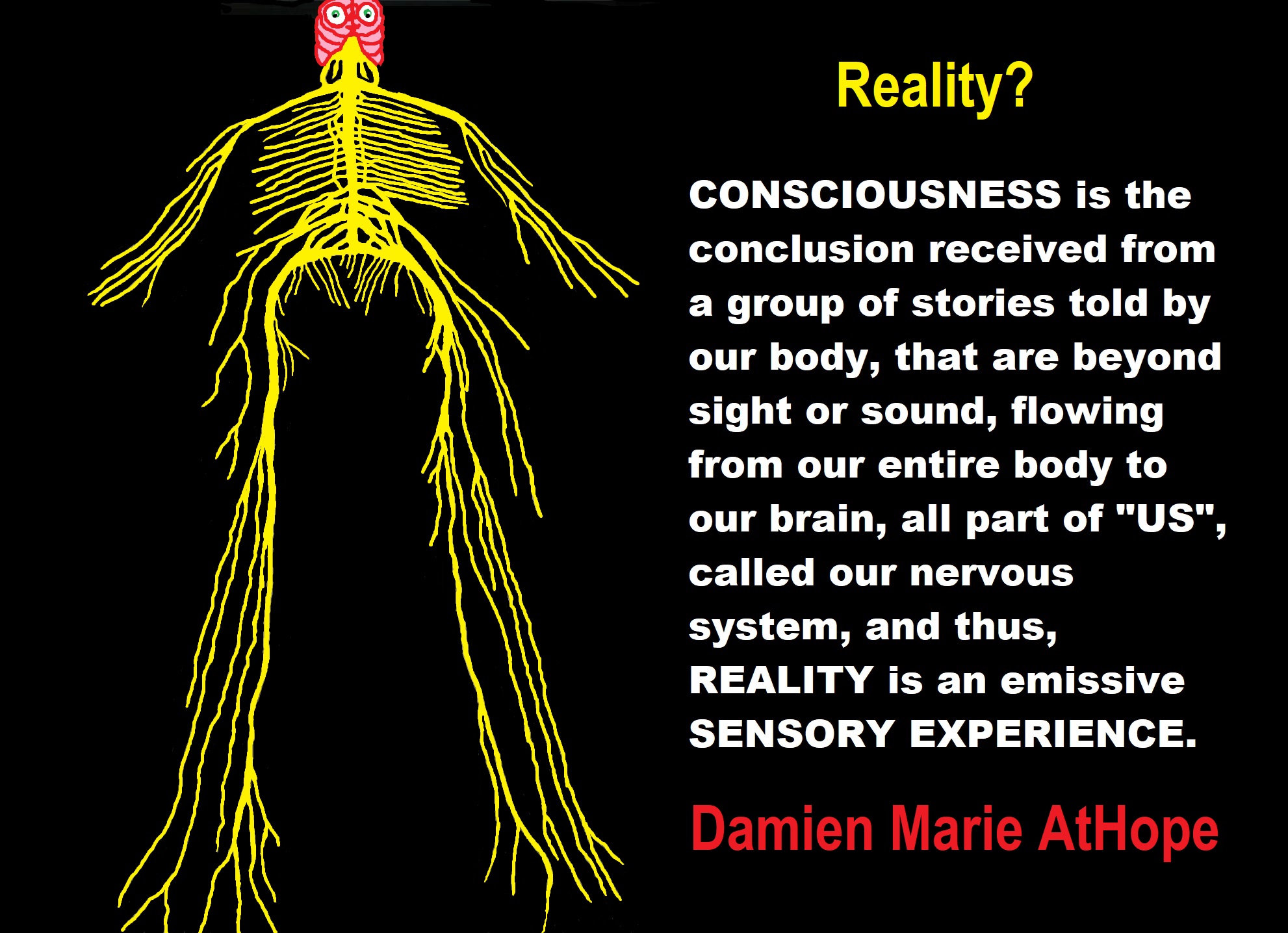

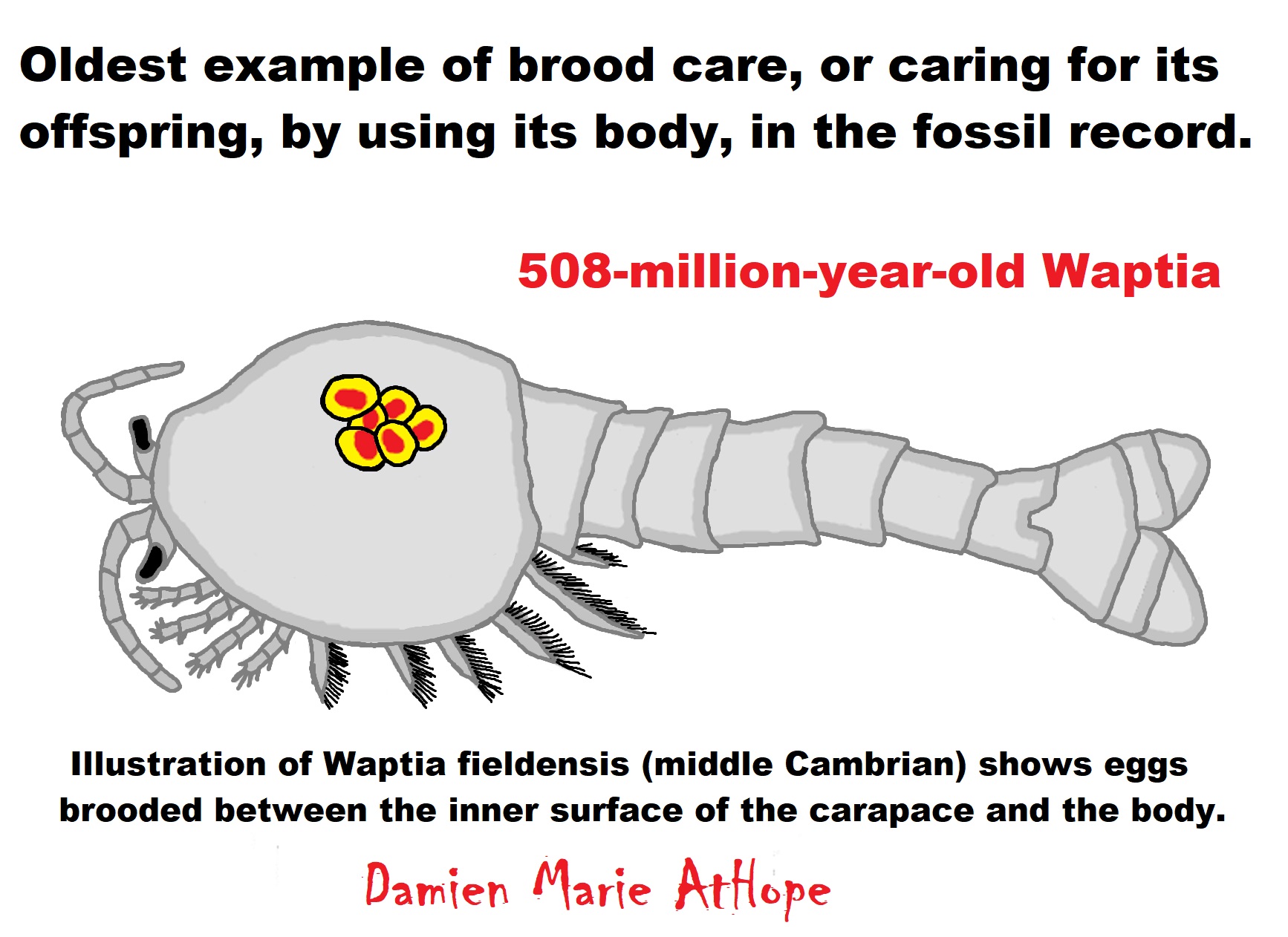
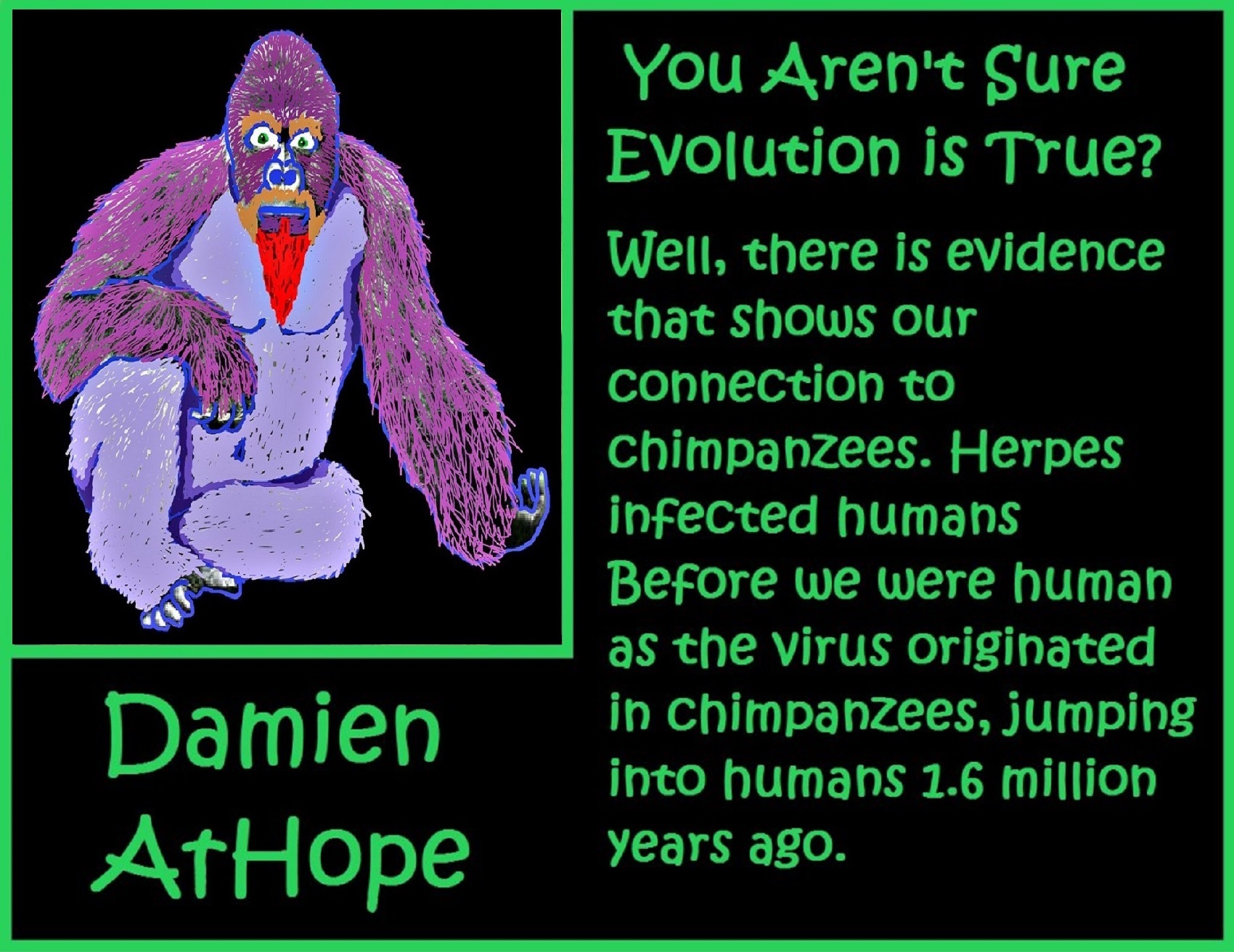

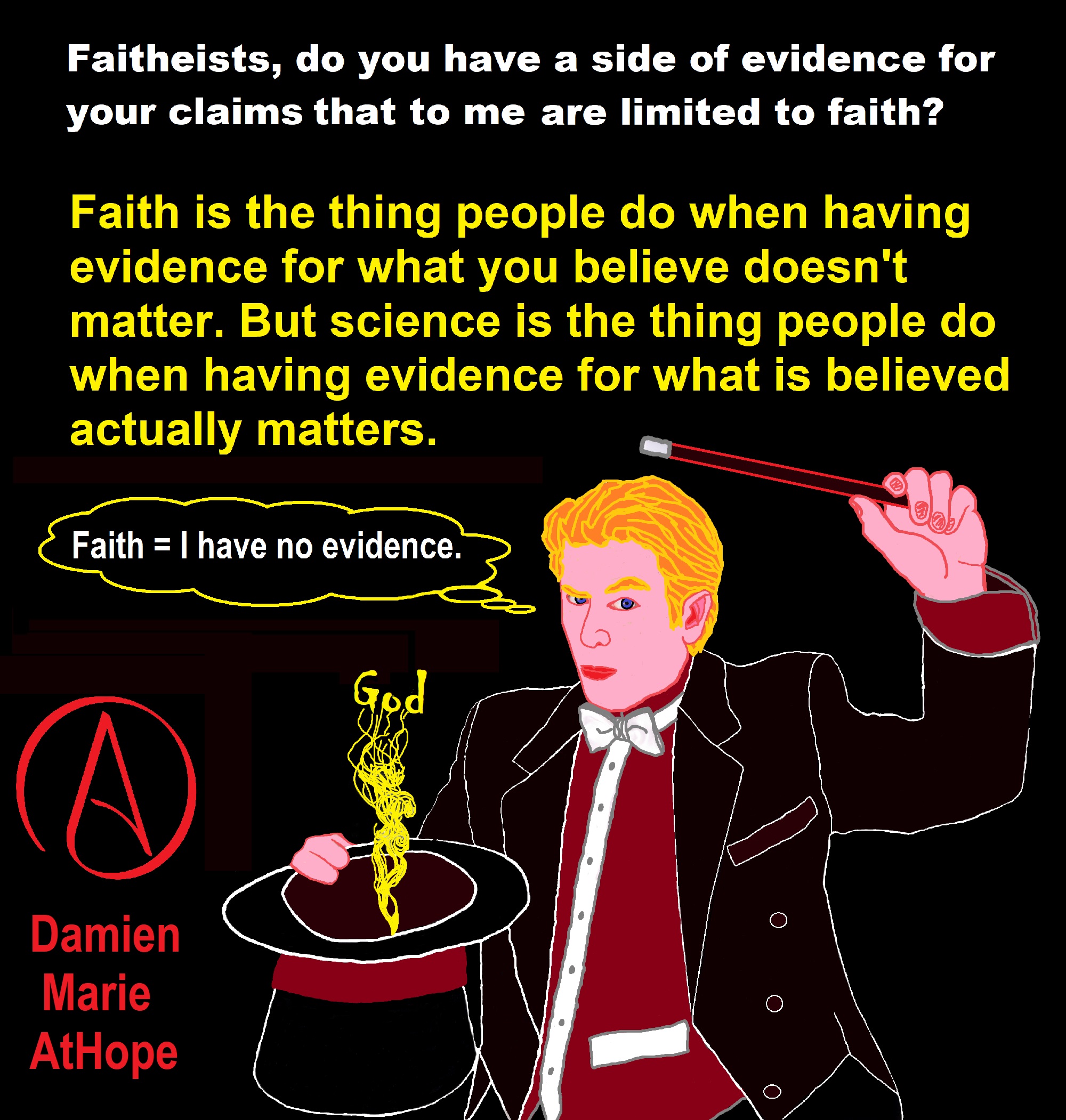
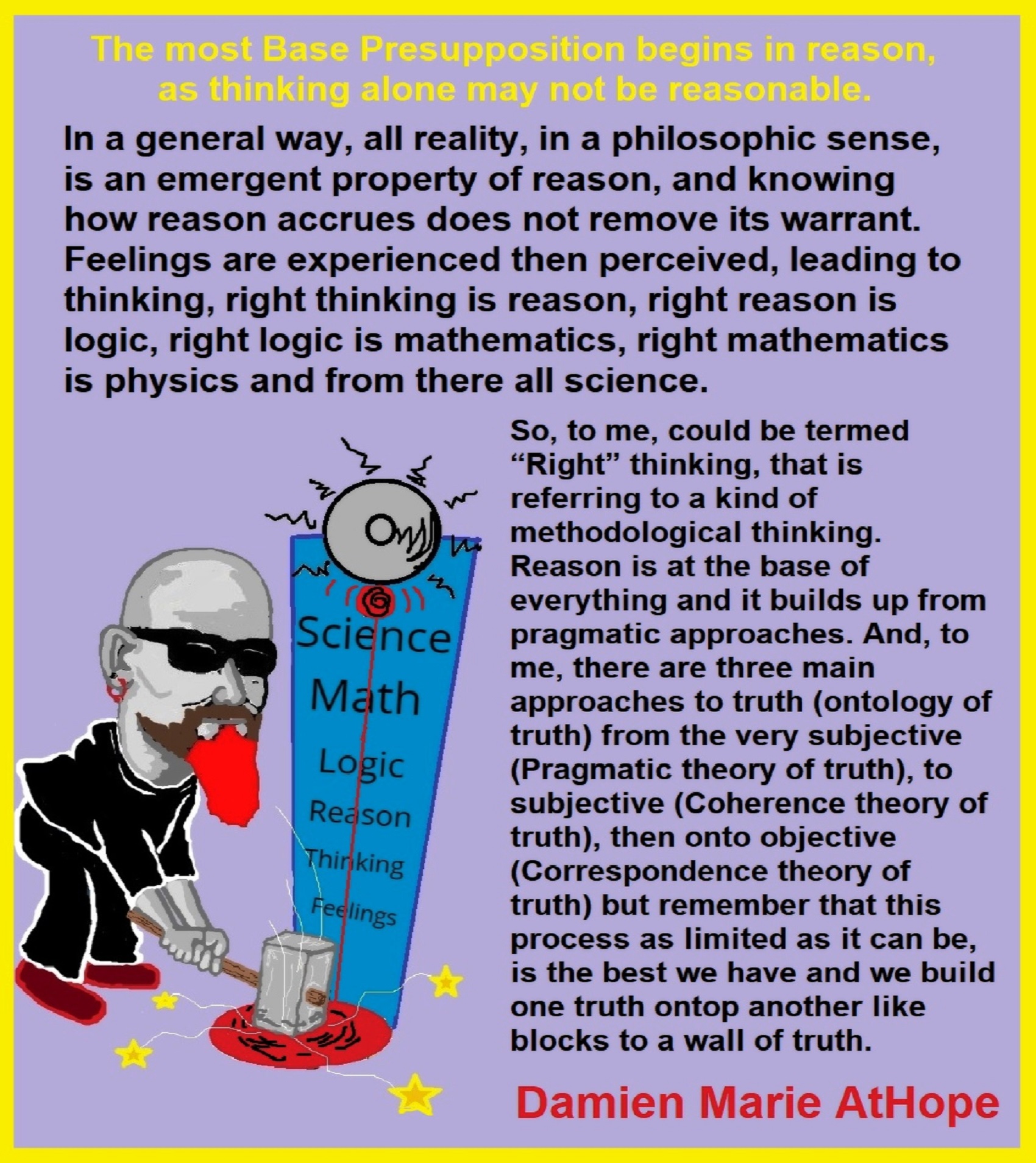

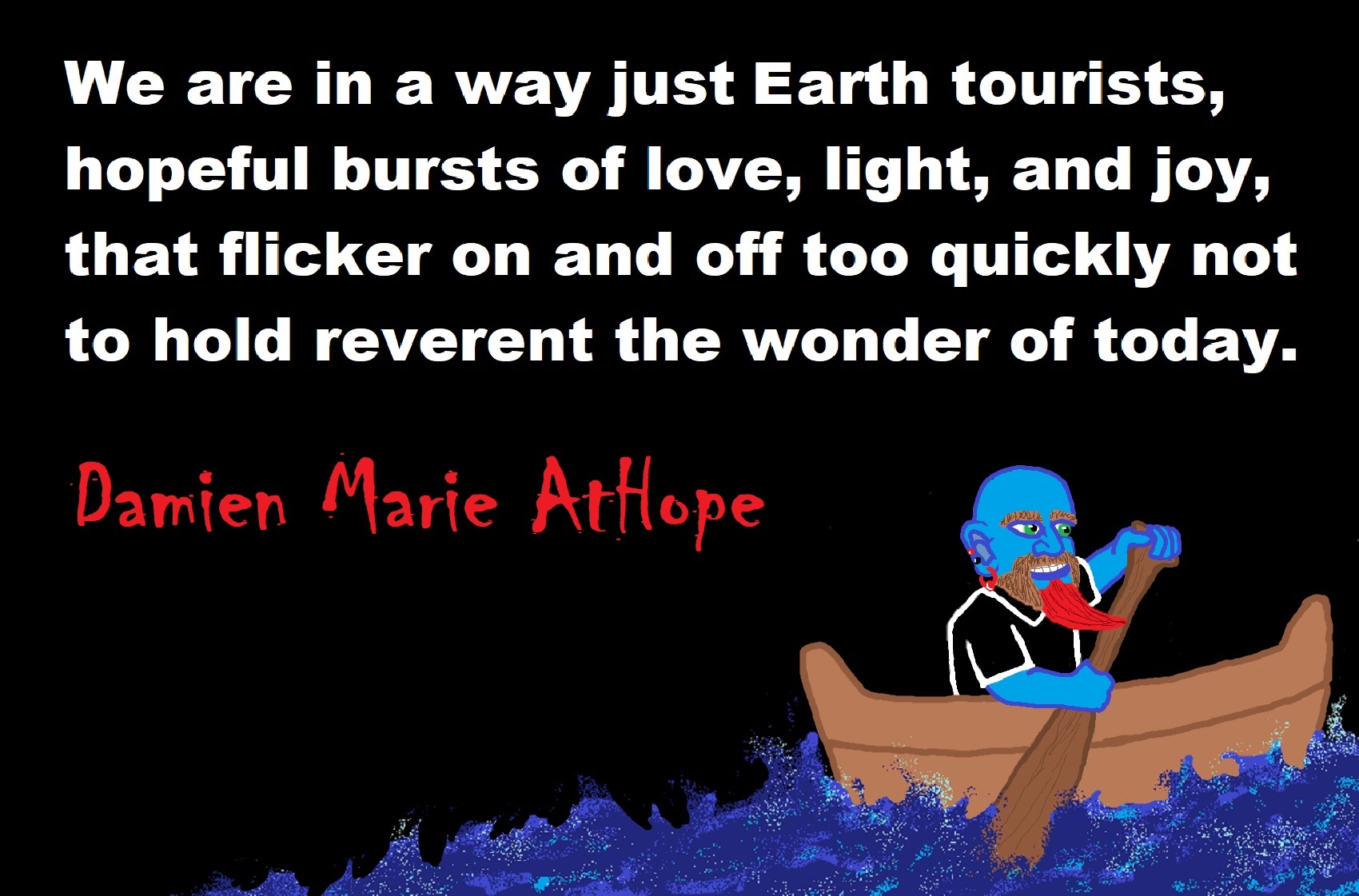

My thoughts on Religion Evolution with external links for more info:
- (Pre-Animism Africa mainly, but also Europe, and Asia at least 300,000 years ago), (Pre-Animism – Oxford Dictionaries)
- (Animism Africa around 100,000 years ago), (Animism – Britannica.com)
- (Totemism Europe around 50,000 years ago), (Totemism – Anthropology)
- (Shamanism Siberia around 30,000 years ago), (Shamanism – Britannica.com)
- (Paganism Turkey around 12,000 years ago), (Paganism – BBC Religion)
- (Progressed Organized Religion “Institutional Religion” Egypt around 5,000 years ago), (Ancient Egyptian Religion – Britannica.com)
- (CURRENT “World” RELIGIONS after 4,000 years ago) (Origin of Major Religions – Sacred Texts)
- (Early Atheistic Doubting at least by 2,600 years ago) (History of Atheism – Wikipedia)
“Religion is an Evolved Product” and Yes, Religion is Like Fear Given Wings…
Atheists talk about gods and religions for the same reason doctors talk about cancer, they are looking for a cure, or a firefighter talks about fires because they burn people and they care to stop them. We atheists too often feel a need to help the victims of mental slavery, held in the bondage that is the false beliefs of gods and the conspiracy theories of reality found in religions.
Understanding Religion Evolution:
- Pre-Animism (at least 300,000 years ago)
- Animism (Africa: 100,000 years ago)
- Totemism (Europe: 50,000 years ago)
- Shamanism (Siberia: 30,000 years ago)
- Paganism (Turkey: 12,000 years ago)
- Progressed organized religion (Egypt: 5,000 years ago), (Egypt, the First Dynasty 5,150 years ago)
- CURRENT “World” RELIGIONS (after 4,000 years ago)
- Early Atheistic Doubting (at least by 2,600 years ago)
“An Archaeological/Anthropological Understanding of Religion Evolution”
It seems ancient peoples had to survived amazing threats in a “dangerous universe (by superstition perceived as good and evil),” and human “immorality or imperfection of the soul” which was thought to affect the still living, leading to ancestor worship. This ancestor worship presumably led to the belief in supernatural beings, and then some of these were turned into the belief in gods. This feeble myth called gods were just a human conceived “made from nothing into something over and over, changing, again and again, taking on more as they evolve, all the while they are thought to be special,” but it is just supernatural animistic spirit-belief perceived as sacred.
Quick Evolution of Religion?
Pre-Animism (at least 300,000 years ago) pre-religion is a beginning that evolves into later Animism. So, Religion as we think of it, to me, all starts in a general way with Animism (Africa: 100,000 years ago) (theoretical belief in supernatural powers/spirits), then this is physically expressed in or with Totemism (Europe: 50,000 years ago) (theoretical belief in mythical relationship with powers/spirits through a totem item), which then enlists a full-time specific person to do this worship and believed interacting Shamanism (Siberia/Russia: 30,000 years ago) (theoretical belief in access and influence with spirits through ritual), and then there is the further employment of myths and gods added to all the above giving you Paganism (Turkey: 12,000 years ago) (often a lot more nature-based than most current top world religions, thus hinting to their close link to more ancient religious thinking it stems from). My hypothesis is expressed with an explanation of the building of a theatrical house (modern religions development). Progressed organized religion (Egypt: 5,000 years ago) with CURRENT “World” RELIGIONS (after 4,000 years ago).
Historically, in large city-state societies (such as Egypt or Iraq) starting around 5,000 years ago culminated to make religion something kind of new, a sociocultural-governmental-religious monarchy, where all or at least many of the people of such large city-state societies seem familiar with and committed to the existence of “religion” as the integrated life identity package of control dynamics with a fixed closed magical doctrine, but this juggernaut integrated religion identity package of Dogmatic-Propaganda certainly did not exist or if developed to an extent it was highly limited in most smaller prehistoric societies as they seem to lack most of the strong control dynamics with a fixed closed magical doctrine (magical beliefs could be at times be added or removed). Many people just want to see developed religious dynamics everywhere even if it is not. Instead, all that is found is largely fragments until the domestication of religion.
Religions, as we think of them today, are a new fad, even if they go back to around 6,000 years in the timeline of human existence, this amounts to almost nothing when seen in the long slow evolution of religion at least around 70,000 years ago with one of the oldest ritual worship. Stone Snake of South Africa: “first human worship” 70,000 years ago. This message of how religion and gods among them are clearly a man-made thing that was developed slowly as it was invented and then implemented peace by peace discrediting them all. Which seems to be a simple point some are just not grasping how devastating to any claims of truth when we can see the lie clearly in the archeological sites.
I wish people fought as hard for the actual values as they fight for the group/clan names political or otherwise they think support values. Every amount spent on war is theft to children in need of food or the homeless kept from shelter.
Here are several of my blog posts on history:
- To Find Truth You Must First Look
- (Magdalenian/Iberomaurusian) Connections to the First Paganists of the early Neolithic Near East Dating from around 17,000 to 12,000 Years Ago
- Natufians: an Ancient People at the Origins of Agriculture and Sedentary Life
- Possible Clan Leader/Special “MALE” Ancestor Totem Poles At Least 13,500 years ago?
- Jewish People with DNA at least 13,200 years old, Judaism, and the Origins of Some of its Ideas
- Baltic Reindeer Hunters: Swiderian, Lyngby, Ahrensburgian, and Krasnosillya cultures 12,020 to 11,020 years ago are evidence of powerful migratory waves during the last 13,000 years and a genetic link to Saami and the Finno-Ugric peoples.
- The Rise of Inequality: patriarchy and state hierarchy inequality
- Fertile Crescent 12,500 – 9,500 Years Ago: fertility and death cult belief system?
- 12,400 – 11,700 Years Ago – Kortik Tepe (Turkey) Pre/early-Agriculture Cultic Ritualism
- Ritualistic Bird Symbolism at Gobekli Tepe and its “Ancestor Cult”
- Male-Homosexual (female-like) / Trans-woman (female) Seated Figurine from Gobekli Tepe
- Could a 12,000-year-old Bull Geoglyph at Göbekli Tepe relate to older Bull and Female Art 25,000 years ago and Later Goddess and the Bull cults like Catal Huyuk?
- Sedentism and the Creation of goddesses around 12,000 years ago as well as male gods after 7,000 years ago.
- Alcohol, where Agriculture and Religion Become one? Such as Gobekli Tepe’s Ritualistic use of Grain as Food and Ritual Drink
- Neolithic Ritual Sites with T-Pillars and other Cultic Pillars
- Paganism: Goddesses around 12,000 years ago then Male Gods after 7,000 years ago
- First Patriarchy: Split of Women’s Status around 12,000 years ago & First Hierarchy: fall of Women’s Status around 5,000 years ago.
- Natufians: an Ancient People at the Origins of Agriculture and Sedentary Life
- J DNA and the Spread of Agricultural Religion (paganism)
- Paganism: an approximately 12,000-year-old belief system
- Paganism 12,000 years old: related to “Anarchism and Socialism” (Pre-Capitalism)
- Shaman burial in Israel 12,000 years ago and the Shamanism Phenomena
- Need to Mythicized: gods and goddesses
- 12,000 – 7,000 Years Ago – Paleo-Indian Culture (The Americas)
- 12,000 – 2,000 Years Ago – Indigenous-Scandinavians (Nordic)
- Norse did not wear helmets with horns?
- Pre-Pottery Neolithic Skull Cult around 11,500 to 8,400 Years Ago?
- 10,400 – 10,100 Years Ago, in Turkey the Nevail Cori Religious Settlement
- 9,000-6,500 Years Old Submerged Pre-Pottery/Pottery Neolithic Ritual Settlements off Israel’s Coast
- Catal Huyuk “first religious designed city” around 9,500 to 7,700 years ago (Turkey)
- Cultic Hunting at Catal Huyuk “first religious designed city”
- Special Items and Art as well as Special Elite Burials at Catal Huyuk
- New Rituals and Violence with the appearance of Pottery and People?
- Haplogroup N and its related Uralic Languages and Cultures
- Ainu people, Sámi people, Native Americans, the Ancient North Eurasians, and Paganistic-Shamanism with Totemism
- Ideas, Technology and People from Turkey, Europe, to China and Back again 9,000 to 5,000 years ago?
- First Pottery of Europe and the Related Cultures
- 9,000 years old Neolithic Artifacts Judean Desert and Hills Israel
- 9,000-7,000 years-old Sex and Death Rituals: Cult Sites in Israel, Jordan, and the Sinai
- 9,000-8500 year old Horned Female shaman Bad Dürrenberg Germany
- Neolithic Jewelry and the Spread of Farming in Europe Emerging out of West Turkey
- 8,600-year-old Tortoise Shells in Neolithic graves in central China have Early Writing and Shamanism
- Swing of the Mace: the rise of Elite, Forced Authority, and Inequality begin to Emerge 8,500 years ago?
- Migrations and Changing Europeans Beginning around 8,000 Years Ago
- My “Steppe-Anatolian-Kurgan hypothesis” 8,000/7,000 years ago
- Around 8,000-year-old Shared Idea of the Mistress of Animals, “Ritual” Motif
- Pre-Columbian Red-Paint (red ochre) Maritime Archaic Culture 8,000-3,000 years ago
- 7,522-6,522 years ago Linear Pottery culture which I think relates to Arcane Capitalism’s origins
- Arcane Capitalism: Primitive socialism, Primitive capital, Private ownership, Means of production, Market capitalism, Class discrimination, and Petite bourgeoisie (smaller capitalists)
- 7,500-4,750 years old Ritualistic Cucuteni-Trypillian culture of Moldova, Romania, and Ukraine
- Roots of a changing early society 7,200-6,700 years ago Jordan and Israel
- Agriculture religion (Paganism) with farming reached Britain between about 7,000 to 6,500 or so years ago and seemingly expressed in things like Western Europe’s Long Barrows
- My Thoughts on Possible Migrations of “R” DNA and Proto-Indo-European?
- “Millet” Spreading from China 7,022 years ago to Europe and related Language may have Spread with it leading to Proto-Indo-European
- Proto-Indo-European (PIE), ancestor of Indo-European languages: DNA, Society, Language, and Mythology
- The Dnieper–Donets culture and Asian varieties of Millet from China to the Black Sea region of Europe by 7,022 years ago
- Kurgan 6,000 years ago/dolmens 7,000 years ago: funeral, ritual, and other?
- 7,020 to 6,020-year-old Proto-Indo-European Homeland of Urheimat or proposed home of their Language and Religion
- Ancient Megaliths: Kurgan, Ziggurat, Pyramid, Menhir, Trilithon, Dolman, Kromlech, and Kromlech of Trilithons
- The Mytheme of Ancient North Eurasian Sacred-Dog belief and similar motifs are found in Indo-European, Native American, and Siberian comparative mythology
- Elite Power Accumulation: Ancient Trade, Tokens, Writing, Wealth, Merchants, and Priest-Kings
- Sacred Mounds, Mountains, Kurgans, and Pyramids may hold deep connections?
- Between 7,000-5,000 Years ago, rise of unequal hierarchy elite, leading to a “birth of the State” or worship of power, strong new sexism, oppression of non-elites, and the fall of Women’s equal status
- Paganism 7,000-5,000 years old: related to “Anarchism and Socialism” (Capitalism) (World War 0) Elite & their slaves
- Hell and Underworld mythologies starting maybe as far back as 7,000 to 5,000 years ago with the Proto-Indo-Europeans?
- The First Expression of the Male God around 7,000 years ago?
- White (light complexion skin) Bigotry and Sexism started 7,000 years ago?
- Around 7,000-year-old Shared Idea of the Divine Bird (Tutelary and/or Trickster spirit/deity), “Ritual” Motif
- Nekhbet an Ancient Egyptian Vulture Goddess and Tutelary Deity
- 6,720 to 4,920 years old Ritualistic Hongshan Culture of Inner Mongolia with 5,000-year-old Pyramid Mounds and Temples
- First proto-king in the Balkans, Varna culture around 6,500 years ago?
- 6,500–5,800 years ago in Israel Late Chalcolithic (Copper Age) Period in the Southern Levant Seems to Express Northern Levant Migrations, Cultural and Religious Transfer
- KING OF BEASTS: Master of Animals “Ritual” Motif, around 6,000 years old or older…
- Around 6000-year-old Shared Idea of the Solid Wheel & the Spoked Wheel-Shaped Ritual Motif
- “The Ghassulian Star,” a mysterious 6,000-year-old mural from Jordan; a Proto-Star of Ishtar, Star of Inanna or Star of Venus?
- Religious/Ritual Ideas, including goddesses and gods as well as ritual mounds or pyramids from Northeastern Asia at least 6,000 years old, seemingly filtering to Iran, Iraq, the Mediterranean, Europe, Egypt, and the Americas?
- Maykop (5,720–5,020 years ago) Caucasus region Bronze Age culture-related to Copper Age farmers from the south, influenced by the Ubaid period and Leyla-Tepe culture, as well as influencing the Kura-Araxes culture
- 5-600-year-old Tomb, Mummy, and First Bearded Male Figurine in a Grave
- Kura-Araxes Cultural 5,520 to 4,470 years old DNA traces to the Canaanites, Arabs, and Jews
- Minoan/Cretan (Keftiu) Civilization and Religion around 5,520 to 3,120 years ago
- Evolution Of Science at least by 5,500 years ago
- 5,500 Years old birth of the State, the rise of Hierarchy, and the fall of Women’s status
- “Jiroft culture” 5,100 – 4,200 years ago and the History of Iran
- Stonehenge: Paganistic Burial and Astrological Ritual Complex, England (5,100-3,600 years ago)
- Around 5,000-year-old Shared Idea of the “Tree of Life” Ritual Motif
- Complex rituals for elite, seen from China to Egypt, at least by 5,000 years ago
- Around 5,000 years ago: “Birth of the State” where Religion gets Military Power and Influence
- The Center of the World “Axis Mundi” and/or “Sacred Mountains” Mythology Could Relate to the Altai Mountains, Heart of the Steppe
- Progressed organized religion starts, an approximately 5,000-year-old belief system
- China’s Civilization between 5,000-3,000 years ago, was a time of war and class struggle, violent transition from free clans to a Slave or Elite society
- Origin of Logics is Naturalistic Observation at least by around 5,000 years ago.
- Paganism 5,000 years old: progressed organized religion and the state: related to “Anarchism and Socialism” (Kings and the Rise of the State)
- Ziggurats (multi-platform temples: 4,900 years old) to Pyramids (multi-platform tombs: 4,700 years old)
- Did a 4,520–4,420-year-old Volcano In Turkey Inspire the Bible God?
- Finland’s Horned Shaman and Pre-Horned-God at least 4,500 years ago?
- 4,000-year-Old Dolmens in Israel: A Connected Dolmen Religious Phenomenon?
- Creation myths: From chaos, Ex nihilo, Earth-diver, Emergence, World egg, and World parent
- Bronze Age “Ritual” connections of the Bell Beaker culture with the Corded Ware/Single Grave culture, which were related to the Yamnaya culture and Proto-Indo-European Languages/Religions
- Low Gods (Earth/ Tutelary deity), High Gods (Sky/Supreme deity), and Moralistic Gods (Deity enforcement/divine order)
- The exchange of people, ideas, and material-culture including, to me, the new god (Sky Father) and goddess (Earth Mother) religion between the Cucuteni-Trypillians and others which is then spread far and wide
- Koryaks: Indigenous People of the Russian Far East and Big Raven myths also found in Tlingit, Haida, Tsimshian, and other Indigenous People of North America
- 42 Principles Of Maat (Egyptian Goddess of the justice) around 4,400 years ago, 2000 Years Before Ten Commandments
- “Happy Easter” Well Happy Eostre/Ishter
- 4,320-3,820 years old “Shimao” (North China) site with Totemistic-Shamanistic Paganism and a Stepped Pyramid
- 4,250 to 3,400 Year old Stonehenge from Russia: Arkaim?
- 4,100-year-old beaker with medicinal & flowering plants in a grave of a woman in Scotland
- Early European Farmer ancestry, Kelif el Boroud people with the Cardial Ware culture, and the Bell Beaker culture Paganists too, spread into North Africa, then to the Canary Islands off West Africa
- Flood Accounts: Gilgamesh epic (4,100 years ago) Noah in Genesis (2,600 years ago)
- Paganism 4,000 years old: related to “Anarchism and Socialism” (First Moralistic gods, then the Origin time of Monotheism)
- When was the beginning: TIMELINE OF CURRENT RELIGIONS, which start around 4,000 years ago.
- Early Religions Thought to Express Proto-Monotheistic Systems around 4,000 years ago
- Kultepe? An archaeological site with a 4,000 years old women’s rights document.
- Single God Religions (Monotheism) = “Man-o-theism” started around 4,000 years ago with the Great Sky Spirit/God Tiān (天)?
- Confucianism’s Tiān (Shangdi god 4,000 years old): Supernaturalism, Pantheism or Theism?
- Yes, Your Male God is Ridiculous
- Mythology, a Lunar Deity is a Goddess or God of the Moon
- Sacred Land, Hills, and Mountains: Sami Mythology (Paganistic Shamanism)
- Horse Worship/Sacrifice: mythical union of Ruling Elite/Kingship and the Horse
- The Amorite/Amurru people’s God Amurru “Lord of the Steppe”, relates to the Origins of the Bible God?
- Bronze Age Exotic Trade Routes Spread Quite Far as well as Spread Religious Ideas with Them
- Sami and the Northern Indigenous Peoples Landscape, Language, and its Connection to Religion
- Prototype of Ancient Analemmatic Sundials around 3,900-3,150 years ago and a Possible Solar Connection to gods?
- Judaism is around 3,450 or 3,250 years old. (“Paleo-Hebrew” 3,000 years ago and Torah 2,500 years ago)
- The Weakening of Ancient Trade and the Strengthening of Religions around 3000 years ago?
- Are you aware that there are religions that worship women gods, explain now religion tears women down?
- Animistic, Totemistic, and Paganistic Superstition Origins of bible god and the bible’s Religion.
- Myths and Folklore: “Trickster gods and goddesses”
- Jews, Judaism, and the Origins of Some of its Ideas
- An Old Branch of Religion Still Giving Fruit: Sacred Trees
- Dating the BIBLE: naming names and telling times (written less than 3,000 years ago, provable to 2,200 years ago)
- Did a Volcano Inspire the bible god?
- Dené–Yeniseian language, Old Copper Complex, and Pre-Columbian Mound Builders?
- No “dinosaurs and humans didn’t exist together just because some think they are in the bible itself”
- Sacred Shit and Sacred Animals?
- Everyone Killed in the Bible Flood? “Nephilim” (giants)?
- Hey, Damien dude, I have a question for you regarding “the bible” Exodus.
- Archaeology Disproves the Bible
- Bible Battle, Just More, Bible Babble
- The Jericho Conquest lie?
- Canaanites and Israelites?
- Accurate Account on how did Christianity Began?
- Let’s talk about Christianity.
- So the 10 commandments isn’t anything to go by either right?
- Misinformed christian
- Debunking Jesus?
- Paulism vs Jesus
- Ok, you seem confused so let’s talk about Buddhism.
- Unacknowledged Buddhism: Gods, Savior, Demons, Rebirth, Heavens, Hells, and Terrorism
- His Foolishness The Dalai Lama
- Yin and Yang is sexist with an ORIGIN around 2,300 years ago?
- I Believe Archaeology, not Myths & Why Not, as the Religious Myths Already Violate Reason!
- Archaeological, Scientific, & Philosophic evidence shows the god myth is man-made nonsense.
- Aquatic Ape Theory/Hypothesis? As Always, Just Pseudoscience.
- Ancient Aliens Conspiracy Theorists are Pseudohistorians
- The Pseudohistoric and Pseudoscientific claims about “Bakoni Ruins” of South Africa
- Why do people think Religion is much more than supernaturalism and superstitionism?
- Religion is an Evolved Product
- Was the Value of Ancient Women Different?
- 1000 to 1100 CE, human sacrifice Cahokia Mounds a pre-Columbian Native American site
- Feminist atheists as far back as the 1800s?
- Promoting Religion as Real is Mentally Harmful to a Flourishing Humanity
- Screw All Religions and Their Toxic lies, they are all fraud
- Forget Religions’ Unfounded Myths, I Have Substantiated “Archaeology Facts.”
- Religion Dispersal throughout the World
- I Hate Religion Just as I Hate all Pseudoscience
- Exposing Scientology, Eckankar, Wicca and Other Nonsense?
- Main deity or religious belief systems
- Quit Trying to Invent Your God From the Scraps of Science.
- Archaeological, Scientific, & Philosophic evidence shows the god myth is man-made nonsense.
- Ancient Alien Conspiracy Theorists: Misunderstanding, Rhetoric, Misinformation, Fabrications, and Lies
- Misinformation, Distortion, and Pseudoscience in Talking with a Christian Creationist
- Judging the Lack of Goodness in Gods, Even the Norse God Odin
- Challenging the Belief in God-like Aliens and Gods in General
- A Challenge to Christian use of Torture Devices?
- Yes, Hinduism is a Religion
- Trump is One of the Most Reactionary Forces of Far-right Christian Extremism
- Was the Bull Head a Symbol of God? Yes!
- Primate Death Rituals
- Christian – “God and Christianity are objectively true”
- Australopithecus afarensis Death Ritual?
- You Claim Global Warming is a Hoax?
- Doubter of Science and Defamer of Atheists?
- I think that sounds like the Bible?
- History of the Antifa (“anti-fascist”) Movements
- Indianapolis Anti-Blasphemy Laws #Free Soheil Rally
- Damien, you repeat the golden rule in so many forms then you say religion is dogmatic?
- Science is a Trustable Methodology whereas Faith is not Trustable at all!
- Was I ever a believer, before I was an atheist?
- Atheists rise in reason
- Mistrust of science?
- Open to Talking About the Definition of ‘God’? But first, we address Faith.
- ‘United Monarchy’ full of splendor and power – Saul, David, and Solomon? Most likely not.
- Is there EXODUS ARCHAEOLOGY? The short answer is “no.”
- Lacking Proof of Bigfoots, Unicorns, and Gods is Just a Lack of Research?
- Religion and Politics: Faith Beliefs vs. Rational Thinking
- Hammer of Truth that lying pig RELIGION: challenged by an archaeologist
- “The Hammer of Truth” -ontology question- What do You Mean by That?
- Navigation of a bad argument: Ad Hominem vs. Attack
- Why is it Often Claimed that Gods have a Gender?
- Why are basically all monotheistic religions ones that have a male god?
- Shifting through the Claims in support of Faith
- Dear Mr. AtHope, The 20th Century is an Indictment of Secularism and a Failed Atheist Century
- An Understanding of the Worldwide Statistics and Dynamics of Terrorist Incidents and Suicide Attacks
- Intoxication and Evolution? Addressing and Assessing the “Stoned Ape” or “Drunken Monkey” Theories as Catalysts in Human Evolution
- Sacred Menstrual cloth? Inanna’s knot, Isis knot, and maybe Ma’at’s feather?
- Damien, why don’t the Hebrews accept the bible stories?
- Dealing with a Troll and Arguing Over Word Meaning
- Knowledge without Belief? Justified beliefs or disbeliefs worthy of Knowledge?
- Afrocentrism and African Religions
- Crecganford @crecganford offers history & stories of the people, places, gods, & culture
- Empiricism-Denier?
I am not an academic. I am a revolutionary that teaches in public, in places like social media, and in the streets. I am not a leader by some title given but from my commanding leadership style of simply to start teaching everywhere to everyone, all manner of positive education.
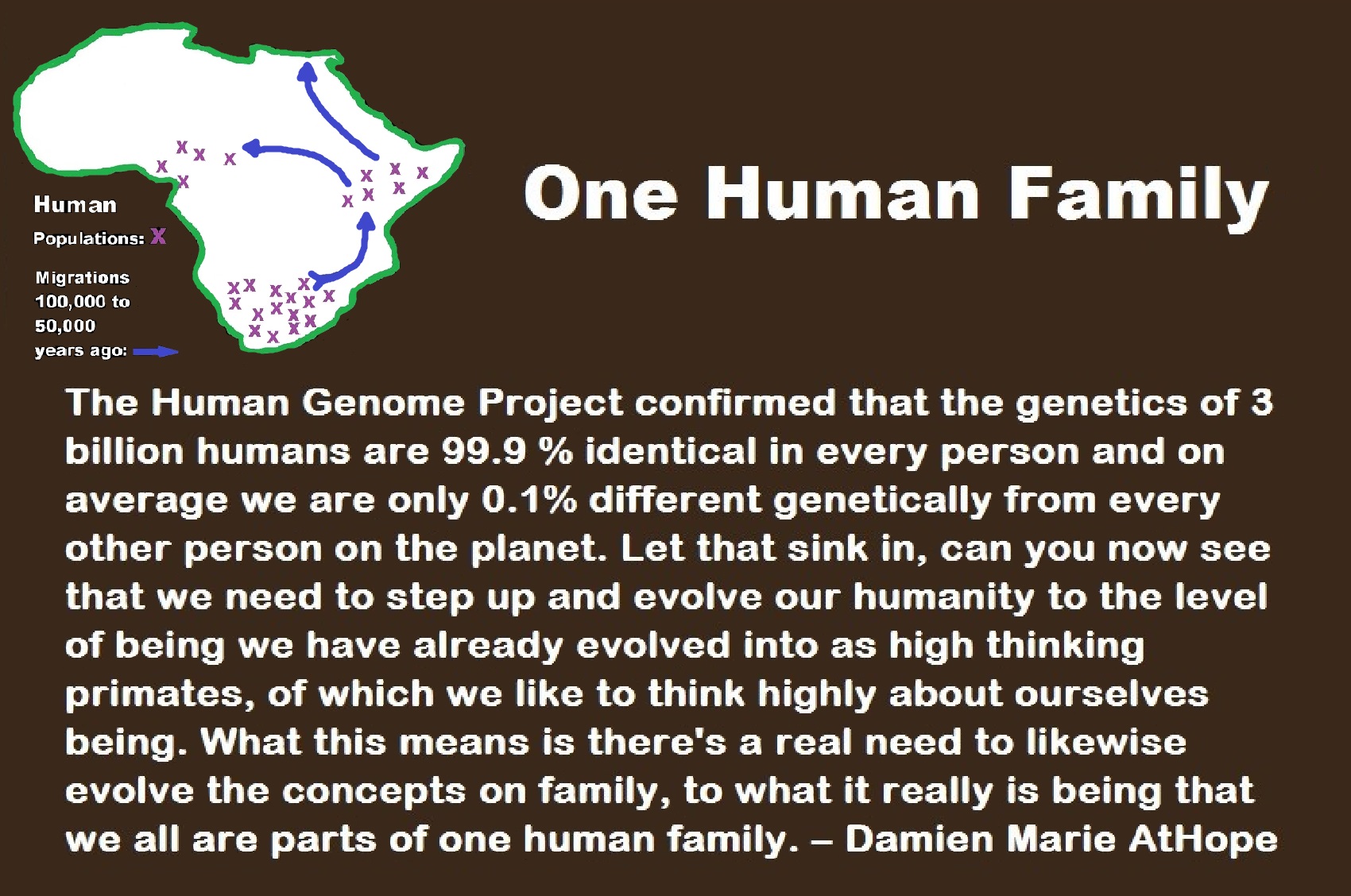
“When researchers completed the final analysis of the Human Genome Project in April 2003, they confirmed that the 3 billion base pairs of genetic letters in humans were 99.9 percent identical in every person. It also meant that individuals are, on average, 0.1 percent different genetically from every other person on the planet. And in that 0.1 percent lies the mystery of why some people are more susceptible to a particular illness or more likely to be healthy than their neighbor – or even another family member.” ref
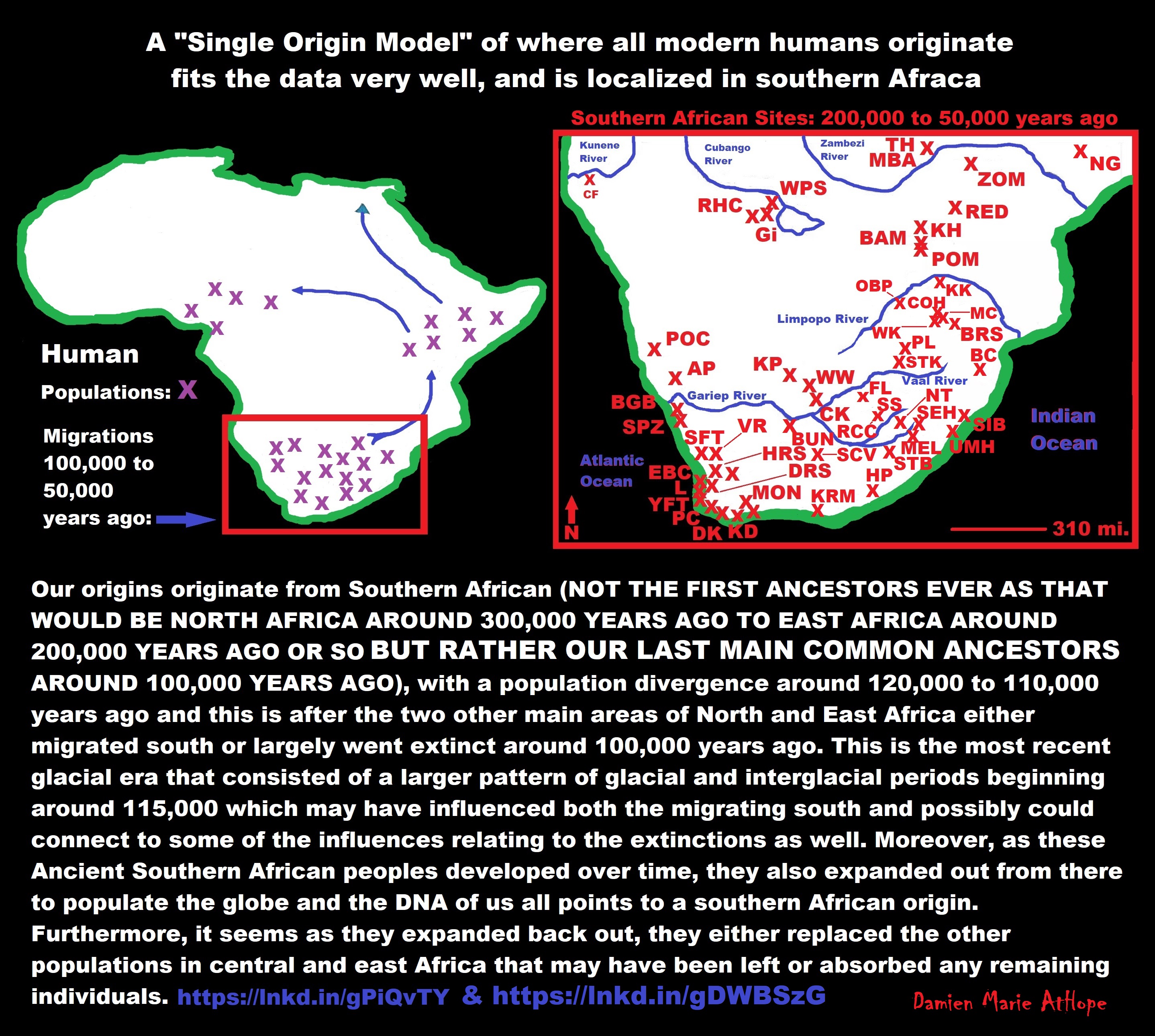
Our origins originate from Southern African (NOT THE FIRST ANCESTORS EVER AS THAT WOULD BE NORTH AFRICA AROUND 300,000 YEARS AGO TO EAST AFRICA AROUND 200,000 YEARS AGO OR SO BUT RATHER OUR LAST MAIN COMMON ANCESTORS AROUND 100,000 YEARS AGO), with a population divergence around 120,000 to 110,000 years ago and this is after the two other main areas of North and East Africa either migrated south or largely went extinct around 100,000 years ago. This is the most recent glacial era that consisted of a larger pattern of glacial and interglacial periods beginning around 115,000 which may have influenced both the migrating south and possibly could connect to some of the influences relating to the extinctions as well. Moreover, as these Ancient Southern African peoples developed over time, they also expanded out from there to populate the globe, and the DNA of us all points to a southern African origin. Furthermore, it seems as they expanded back out, they either replaced the other populations in central and east Africa that may have been left or absorbed any remaining individuals. ref
Southern African Middle Stone Age sites:
(Ap) Apollo 11; (BAM) Bambata; (BBC) Blombos Cave; (BC) Border Cave; (BGB)Boegoeberg; (BPA) Boomplaas; (BRS) Bushman Rock Shelter; (BUN) Bundu Farm; (CF)Cufema Reach; (CK) Canteen Kopje; (COH) Cave of Hearths; (CSB) Cape St Blaize; (DK)Die Kelders Cave 1; (DRS) Diepkloof Rock Shelter; (EBC) Elands Bay Cave; (FL) Florisbad; (≠GI) ≠Gi; (HP) Howiesons Poort; (HRS) Hollow Rock Shelter; (KD) Klipdrift; (KKH) Klein Kliphuis; (KH) Khami; (KK) Kudu Koppie; (KP) Kathu Pan; (KRM) Klasies River Main Site; (L) Langebaan; (MBA) Mumbwa Caves; (MC) Mwulu’s Cave; (MEL)Melikane; (MON) Montagu Cave; (NBC) Nelson Bay Cave; (NG) Ngalue; (NT) Ntloana Tšoana; (OBP) Olieboomspoort; (PC) Peers Cave; (POC) Pockenbank; (PL) Plover’s Lake; (POM) Pomongwe; (PP) Pinnacle Point; (RCC) Rose Cottage Cave; (RED) Redcliff; (RHC) Rhino Cave; (SCV) Seacow Valley; (SFT) Soutfontein; (SEH) Sehonghong; (SIB)Sibudu Cave; (SPZ) Spitzkloof Rock Shelter; (SS) Sunnyside 1; (STB) Strathalan Cave B; (STK) Sterkfontein; (TR) Twin Rivers; (UMH) Umhlatuzana; (VR) Varsche Rivier 003; (WPS) White Paintings Shelter; (WK) Wonderkrater; (WW) Wonderwerk; (YFT)Ysterfontein 1; (ZOM) Zombepata Cave. ref
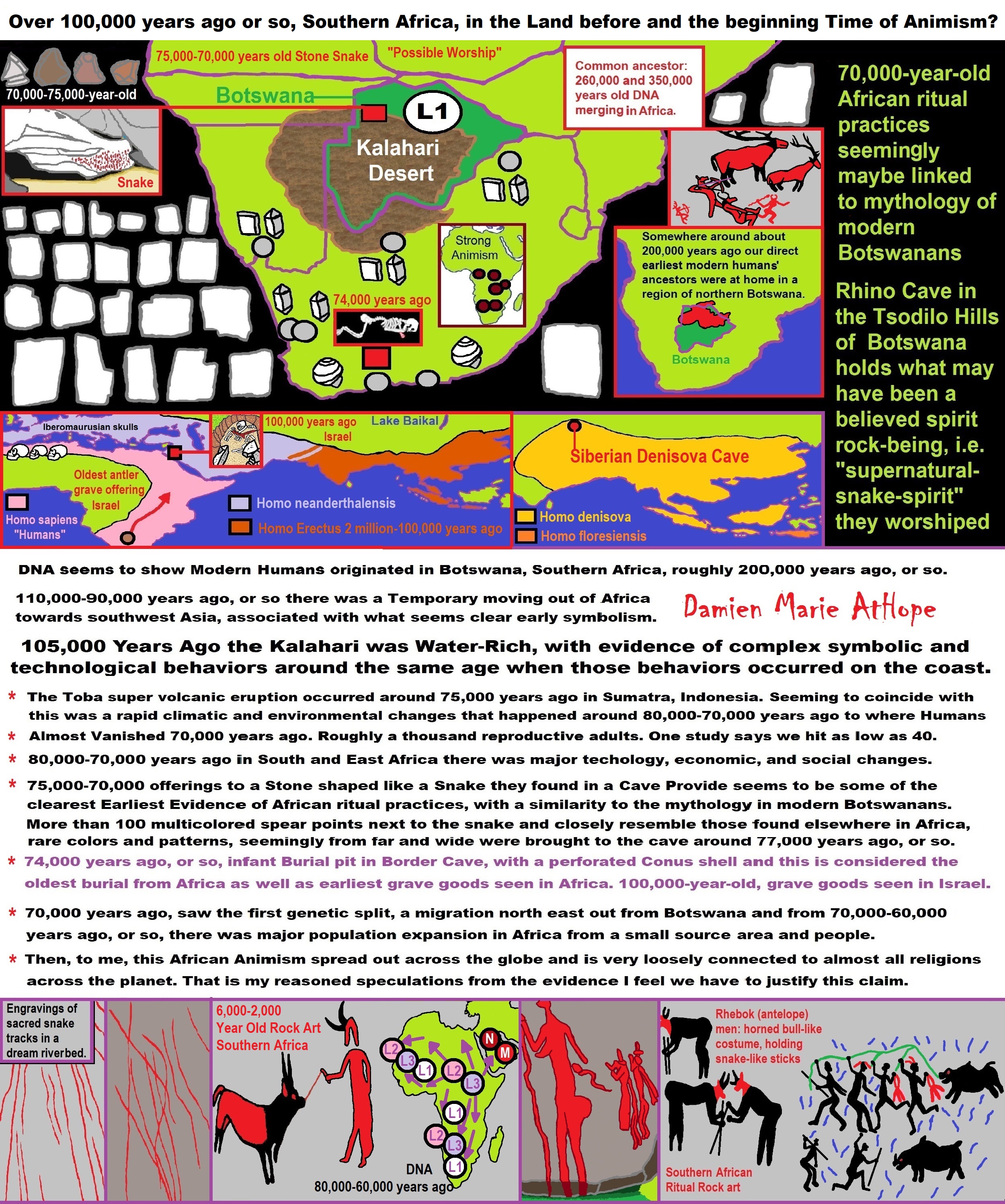
ref, ref, ref, ref, ref, ref, ref, ref, ref, ref, ref, ref, ref, ref, ref, ref, ref, ref, ref, ref, ref, ref, ref, ref, ref, ref, ref, ref, ref, ref, ref, ref, ref, ref, ref, ref, ref, ref, ref, ref, ref, ref, ref, ref, ref, ref, ref, ref, ref, ref, ref, ref
Animism: a belief among some indigenous people, young children, or all religious people!
Over 100,000 years ago or so, Southern Africa, in the Land before and the beginning Time of Animism?
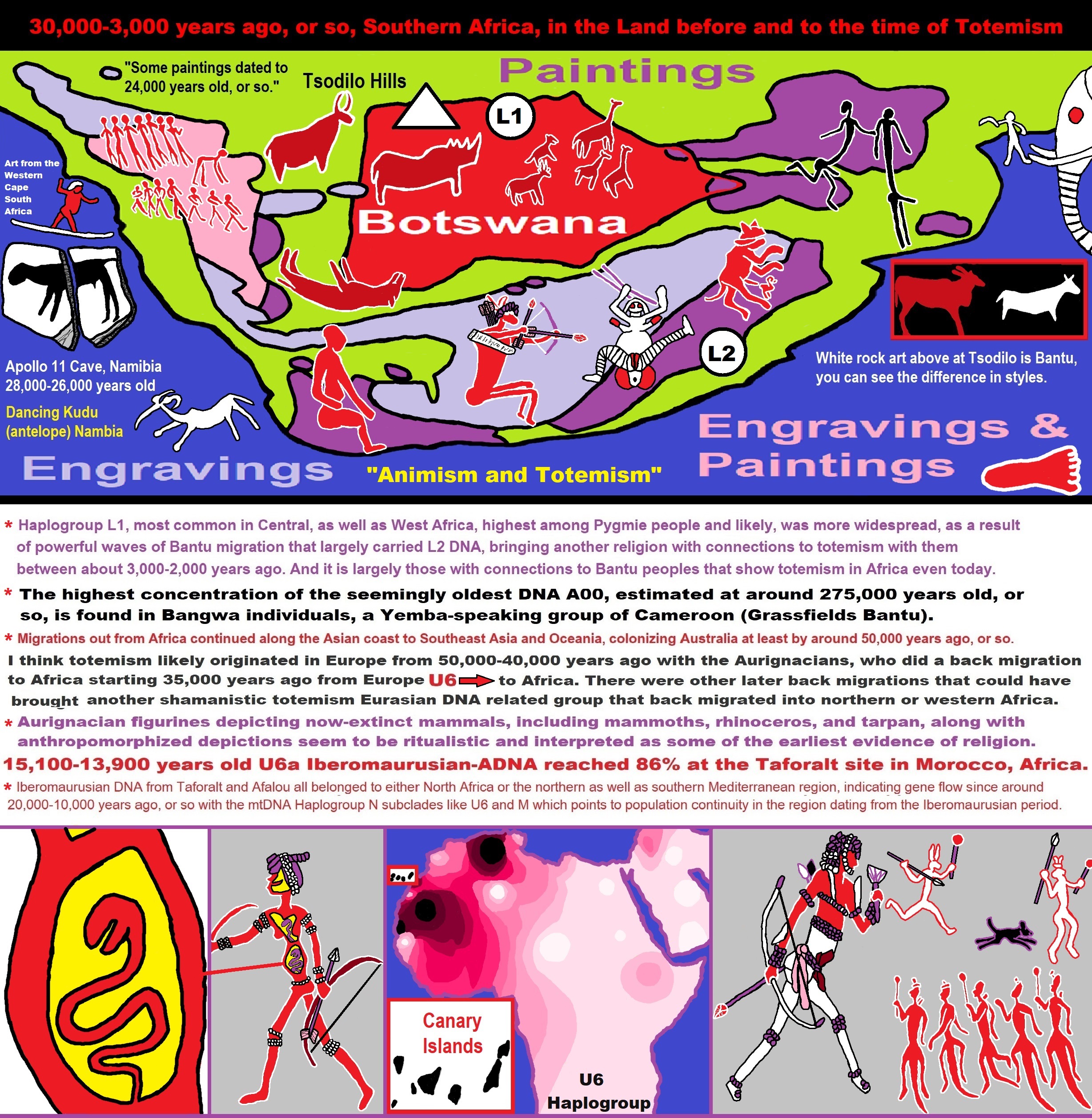
ref, ref, ref, ref, ref, ref, ref, ref, ref, ref, ref, ref, ref, ref, ref, ref, ref, ref, ref, ref, ref, ref, ref, ref, ref, ref, ref, ref, ref, ref, ref, ref, ref, ref, ref, ref, ref, ref, ref, ref, ref, ref, ref, ref, ref, ref, ref, ref, ref, ref, ref, ref, ref, ref, ref, ref, ref, ref, ref, ref,
Explaining the Earliest Religious Expression, that of Animism (beginning 100,000 to 70,000 years ago?) to Totemism (beginning 30,000 to 3,000 years ago?) in Southern Africa: LINK
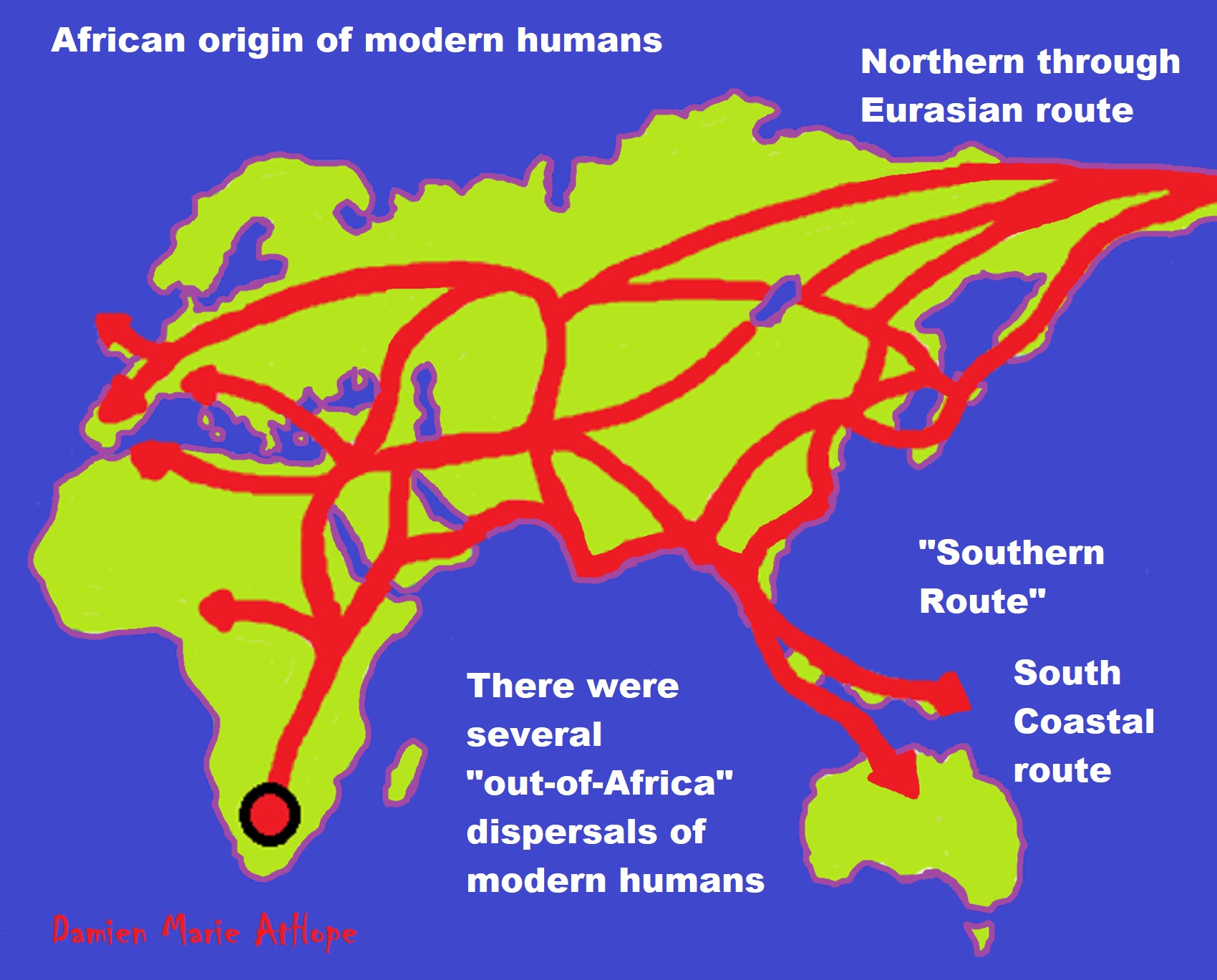
ref, ref, ref, ref, ref, ref, ref, ref
“There are two geographically plausible routes that have been proposed for humans to emerge from Africa: through the current Egypt and Sinai (Northern Route), or through Ethiopia, the Bab el Mandeb strait, and the Arabian Peninsula (Southern Route).” ref
“Although there is a general consensus on the African origin of early modern humans, there is disagreement about how and when they dispersed to Eurasia. This paper reviews genetic and Middle Stone Age/Middle Paleolithic archaeological literature from northeast Africa, Arabia, and the Levant to assess the timing and geographic backgrounds of Upper Pleistocene human colonization of Eurasia. At the center of the discussion lies the question of whether eastern Africa alone was the source of Upper Pleistocene human dispersals into Eurasia or were there other loci of human expansions outside of Africa? The reviewed literature hints at two modes of early modern human colonization of Eurasia in the Upper Pleistocene: (i) from multiple Homo sapiens source populations that had entered Arabia, South Asia, and the Levant prior to and soon after the onset of the Last Interglacial (MIS-5), (ii) from a rapid dispersal out of East Africa via the Southern Route (across the Red Sea basin), dating to ~74,000-60,000 years ago.” ref
“Within Africa, Homo sapiens dispersed around the time of its speciation, roughly 300,000 years ago. The so-called “recent dispersal” of modern humans took place about 70–50,000 years ago. It is this migration wave that led to the lasting spread of modern humans throughout the world. The coastal migration between roughly 70,000 and 50,000 years ago is associated with mitochondrial haplogroups M and N, both derivative of L3. Europe was populated by an early offshoot that settled the Near East and Europe less than 55,000 years ago. Modern humans spread across Europe about 40,000 years ago, possibly as early as 43,000 years ago, rapidly replacing the Neanderthal population.” ref, ref
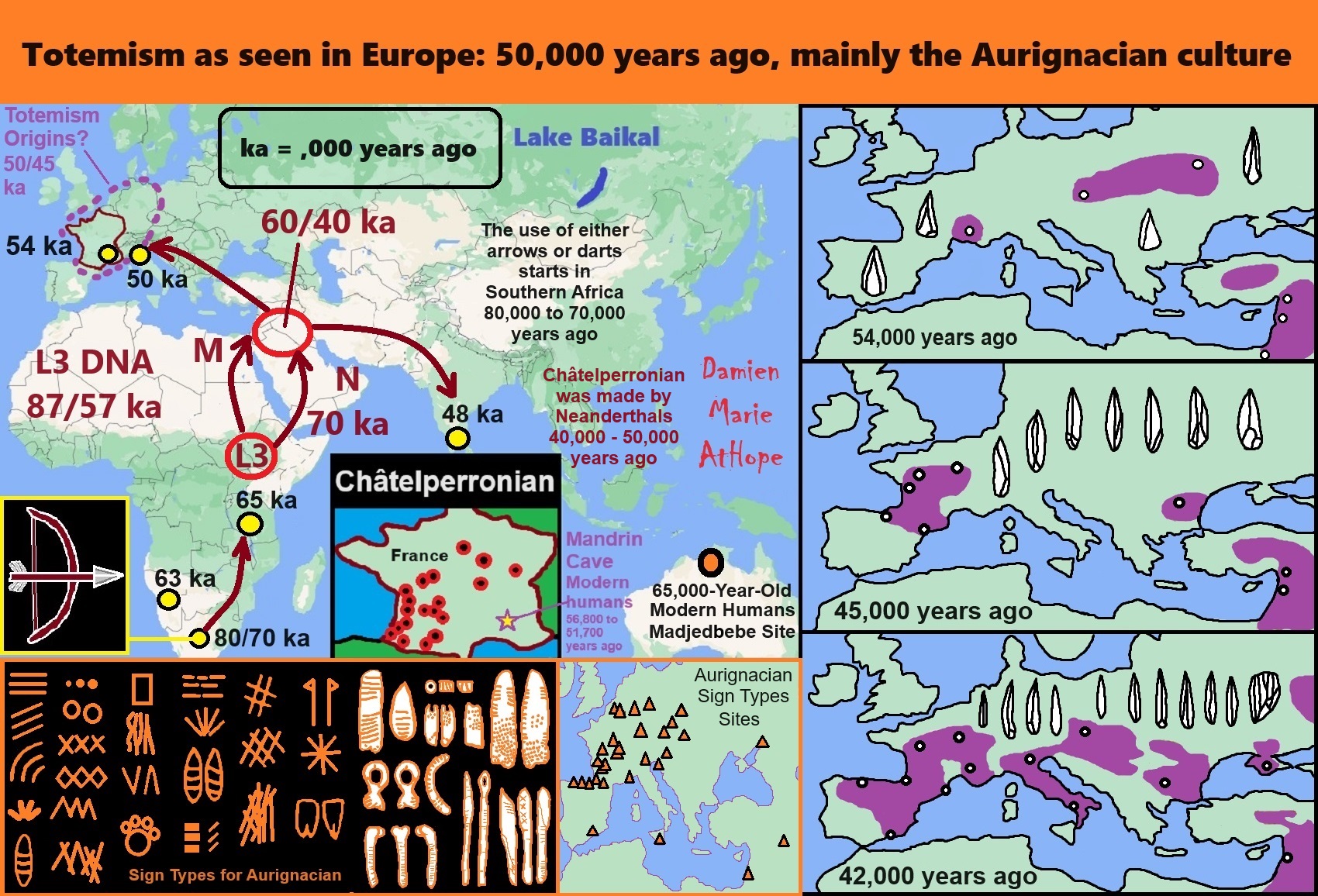
ref, ref, ref, ref, ref, ref, ref, ref, ref, ref, ref, ref, ref, ref, ref, ref, ref, ref, ref, ref, ref, ref, ref
This is my thoughts/speculations on the origins of Totemism
Totemism as seen in Europe: 50,000 years ago, mainly the Aurignacian culture
- Pre-Aurignacian “Châtelperronian” (Western Europe, mainly Spain and France, possible transitional/cultural diffusion between Neanderthals and humans around 50,000-40,000 years ago)
- Archaic–Aurignacian/Proto-Aurignacian (Europe around 46,000-35,000)
- Aurignacian “classical/early to late” (Europe and other areas around 38,000 – 26,000 years ago)
“In the realm of culture, the archeological evidence also supports a Neandertal contribution to Europe’s earliest modern human societies, which feature personal ornaments completely unknown before immigration and are characteristic of such Neandertal-associated archeological entities as the Chatelperronian and the Uluzzian.” – (PDF) Neandertals and Moderns Mixed, and It Matters: Link
Totemism as seen in Europe: 50,000 years ago, mainly the Aurignacian culture

ref, ref, ref, ref, ref, ref, ref, ref, ref, ref, ref, ref
“There were at least several “out-of-Africa” dispersals of modern humans, possibly beginning as early as 270,000 years ago, including 215,000 years ago to at least Greece, and certainly via northern Africa and the Arabian Peninsula about 130,000 to 115,000 years ago. These early waves appear to have mostly died out or retreated by 80,000 years ago.” ref
“The most significant “recent” wave out of Africa took place about 70,000–50,000 years ago, via the so-called “Southern Route“, spreading rapidly along the coast of Asia and reaching Australia by around 65,000–50,000 years ago, (though some researchers question the earlier Australian dates and place the arrival of humans there at 50,000 years ago at earliest, while others have suggested that these first settlers of Australia may represent an older wave before the more significant out of Africa migration and thus not necessarily be ancestral to the region’s later inhabitants) while Europe was populated by an early offshoot which settled the Near East and Europe less than 55,000 years ago.” ref
- “An Eastward Dispersal from Northeast Africa to Arabia 150,000–130,000 years ago based on the finds at Jebel Faya dated to 127,000 years ago (discovered in 2011). Possibly related to this wave are the finds from Zhirendong cave, Southern China, dated to more than 100,000 years ago. Other evidence of modern human presence in China has been dated to 80,000 years ago.” ref
- “The most significant out of Africa dispersal took place around 50–70,000 years ago via the so-called Southern Route, either before or after the Toba event, which happened between 69,000 and 77,000 years ago. This dispersal followed the southern coastline of Asia, and reached Australia around 65,000-50,000 years ago, or according to some research, by 50,000 years ago at earliest. Western Asia was “re-occupied” by a different derivation from this wave around 50,000 years ago, and Europe was populated from Western Asia beginning around 43,000 years ago.” ref
- “Wells (2003) describes an additional wave of migration after the southern coastal route, namely a northern migration into Europe at circa 45,000 years ago. However, this possibility is ruled out by Macaulay et al. (2005) and Posth et al. (2016), who argue for a single coastal dispersal, with an early offshoot into Europe.” ref


ref, ref, ref, ref, ref, ref, ref, ref, ref, ref, ref, ref, ref, ref, ref, ref, ref, ref, ref
Here are my thoughts/speculations on where I believe is the possible origin of shamanism, which may have begun sometime around 35,000 to 30,000 years ago seen in the emergence of the Gravettian culture, just to outline his thinking, on what thousands of years later led to evolved Asian shamanism, in general, and thus WU shamanism as well. In both Europe-related “shamanism-possible burials” and in Gravettian mitochondrial DNA is a seeming connection to Haplogroup U. And the first believed Shaman proposed burial belonged to Eastern Gravettians/Pavlovian culture at Dolní Věstonice in southern Moravia in the Czech Republic, which is the oldest permanent human settlement that has ever been found. It is at Dolní Věstonice where approximately 27,000-25,000 years ago a seeming female shaman was buried and also there was an ivory totem portrait figure, seemingly of her.
And my thoughts on how cultural/ritual aspects were influenced in the area of Göbekli Tepe. I think it relates to a few different cultures starting in the area before the Neolithic. Two different groups of Siberians first from northwest Siberia with U6 haplogroup 40,000 to 30,000 or so. Then R Haplogroup (mainly haplogroup R1b but also some possible R1a both related to the Ancient North Eurasians). This second group added its “R1b” DNA of around 50% to the two cultures Natufian and Trialetian. To me, it is likely both of these cultures helped create Göbekli Tepe. Then I think the female art or graffiti seen at Göbekli Tepe to me possibly relates to the Epigravettians that made it into Turkey and have similar art in North Italy. I speculate that possibly the Totem pole figurines seen first at Kostenki, next went to Mal’ta in Siberia as seen in their figurines that also seem “Totem-pole-like”, and then with the migrations of R1a it may have inspired the Shigir idol in Russia and the migrations of R1b may have inspired Göbekli Tepe.

Ancient North Eurasian (ANE)
Ancient Beringian/Ancestral Native American (AB/ANA)
Eastern Hunter-Gatherer (EHG)
Western Hunter-Gatherers (WHG)
Western Steppe Herders (WSH)
Scandinavian Hunter-Gatherer (SHG)
Early European Farmers (EEF)
Jōmon people (Ainu people OF Hokkaido Island)
Neolithic Iranian farmers (Iran_N) (Iran Neolithic)
Haplogroup R possible time of origin about 27,000 years in Central Asia, South Asia, or Siberia:
- Mal’ta–Buret’ culture (24,000-15,000 years ago)
- Afontova Gora culture (21,000-12,000 years ago)
- Trialetian culture (16,000–8000 years ago)
- Samara culture (7,000-6,500 years ago)
- Khvalynsk culture (7,000-6,500 years ago)
- Afanasievo culture (5,300-4,500 years ago)
- Yamna/Yamnaya Culture (5,300-4,500 years ago)
- Andronovo culture (4,000–2,900 years ago) ref
Groups partially derived from the Ancient North Eurasians
“The ANE lineage is defined by association with the MA-1, or “Mal’ta boy”, remains of 24,000 years ago in central Siberia Mal’ta-Buret’ culture 24,000-15,000 years ago. The Ancient North Eurasians (ANE) samples (Afontova Gora 3, Mal’ta 1, and Yana-RHS) show evidence for minor gene flow from an East Asian-related group (simplified by the Amis, Han, or Tianyuan) but no evidence for ANE-related geneflow into East Asians (Amis, Han, Tianyuan), except the Ainu, of North Japan.” ref
“The ANE lineage is defined by association with the MA-1, or “Mal’ta boy”, remains of 24,000 years ago in central Siberia Mal’ta-Buret’ culture 24,000-15,000 years ago “basal to modern-day Europeans”. Some Ancient North Eurasians also carried East Asian populations, such as Tianyuan Man.” ref
“Bronze-age-steppe Yamnaya and Afanasevo cultures were ANE at around 50% and Eastern Hunter-Gatherer (EHG) at around 75% ANE. Karelia culture: Y-DNA R1a-M417 8,400 years ago, Y-DNA J, 7,200 years ago, and Samara, of Y-haplogroup R1b-P297 7,600 years ago is closely related to ANE from Afontova Gora, 18,000 years ago around the time of blond hair first seen there.” ref
Ancient North Eurasian
“In archaeogenetics, the term Ancient North Eurasian (often abbreviated as ANE) is the name given to an ancestral West Eurasian component that represents descent from the people similar to the Mal’ta–Buret’ culture and populations closely related to them, such as from Afontova Gora and the Yana Rhinoceros Horn Site. Significant ANE ancestry are found in some modern populations, including Europeans and Native Americans.” ref
“The ANE lineage is defined by association with the MA-1, or “Mal’ta boy“, the remains of an individual who lived during the Last Glacial Maximum, 24,000 years ago in central Siberia, Ancient North Eurasians are described as a lineage “which is deeply related to Paleolithic/Mesolithic hunter-gatherers in Europe,” meaning that they diverged from Paleolithic Europeans a long time ago.” ref
“The ANE population has also been described as having been “basal to modern-day Europeans” but not especially related to East Asians, and is suggested to have perhaps originated in Europe or Western Asia or the Eurasian Steppe of Central Asia. However, some samples associated with Ancient North Eurasians also carried ancestry from an ancient East Asian population, such as Tianyuan Man. Sikora et al. (2019) found that the Yana RHS sample (31,600 BP) in Northern Siberia “can be modeled as early West Eurasian with an approximately 22% contribution from early East Asians.” ref
“Populations genetically similar to MA-1 were an important genetic contributor to Native Americans, Europeans, Central Asians, South Asians, and some East Asian groups, in order of significance. Lazaridis et al. (2016:10) note “a cline of ANE ancestry across the east-west extent of Eurasia.” The ancient Bronze-age-steppe Yamnaya and Afanasevo cultures were found to have a noteworthy ANE component at ~50%.” ref
“According to Moreno-Mayar et al. 2018 between 14% and 38% of Native American ancestry may originate from gene flow from the Mal’ta–Buret’ people (ANE). This difference is caused by the penetration of posterior Siberian migrations into the Americas, with the lowest percentages of ANE ancestry found in Eskimos and Alaskan Natives, as these groups are the result of migrations into the Americas roughly 5,000 years ago.” ref
“Estimates for ANE ancestry among first wave Native Americans show higher percentages, such as 42% for those belonging to the Andean region in South America. The other gene flow in Native Americans (the remainder of their ancestry) was of East Asian origin. Gene sequencing of another south-central Siberian people (Afontova Gora-2) dating to approximately 17,000 years ago, revealed similar autosomal genetic signatures to that of Mal’ta boy-1, suggesting that the region was continuously occupied by humans throughout the Last Glacial Maximum.” ref
“The earliest known individual with a genetic mutation associated with blonde hair in modern Europeans is an Ancient North Eurasian female dating to around 16000 BCE from the Afontova Gora 3 site in Siberia. It has been suggested that their mythology may have included a narrative, found in both Indo-European and some Native American fables, in which a dog guards the path to the afterlife.” ref
“Genomic studies also indicate that the ANE component was introduced to Western Europe by people related to the Yamnaya culture, long after the Paleolithic. It is reported in modern-day Europeans (7%–25%), but not of Europeans before the Bronze Age. Additional ANE ancestry is found in European populations through paleolithic interactions with Eastern Hunter-Gatherers, which resulted in populations such as Scandinavian Hunter-Gatherers.” ref
“The Ancient North Eurasians (ANE) split from the ancestors of European peoples somewhere in the Middle East or South-central Asia, and used a northern dispersal route through Central Asia into Northern Asia and Siberia. Genetic analyses show that all ANE samples (Afontova Gora 3, Mal’ta 1, and Yana-RHS) show evidence for minor gene flow from an East Asian-related group (simplified by the Amis, Han, or Tianyuan). In contrast, no evidence for ANE-related geneflow into East Asians (Amis, Han, Tianyuan), except the Ainu, was found.” ref
“Genetic data suggests that the ANE formed during the Terminal Upper-Paleolithic (36+-1,5ka) period from a deeply European-related population, which was once widespread in Northern Eurasia, and from an early East Asian-related group, which migrated northwards into Central Asia and Siberia, merging with this deeply European-related population. These population dynamics and constant northwards geneflow of East Asian-related ancestry would later gave rise to the “Ancestral Native Americans” and Paleosiberians, which replaced the ANE as dominant population of Siberia.” ref
Groups partially derived from the Ancient North Eurasians
“Eastern Hunter-Gatherer (EHG) is a lineage derived predominantly (75%) from ANE. It is represented by two individuals from Karelia, one of Y-haplogroup R1a-M417, dated c. 8.4 kya, the other of Y-haplogroup J, dated c. 7.2 kya; and one individual from Samara, of Y-haplogroup R1b-P297, dated c. 7.6 kya. This lineage is closely related to the ANE sample from Afontova Gora, dated c. 18 kya. After the end of the Last Glacial Maximum, the Western Hunter-Gatherers (WHG) and EHG lineages merged in Eastern Europe, accounting for early presence of ANE-derived ancestry in Mesolithic Europe. Evidence suggests that as Ancient North Eurasians migrated West from Eastern Siberia, they absorbed Western Hunter-Gatherers and other West Eurasian populations as well.” ref
“Caucasian Hunter-Gatherer (CHG) is represented by the Satsurblia individual dated ~13 kya (from the Satsurblia cave in Georgia), and carried 36% ANE-derived admixture. While the rest of their ancestry is derived from the Dzudzuana cave individual dated ~26 kya, which lacked ANE-admixture, Dzudzuana affinity in the Caucasus decreased with the arrival of ANE at ~13 kya Satsurblia.” ref
“Scandinavian Hunter-Gatherer (SHG) is represented by several individuals buried at Motala, Sweden ca. 6000 BC. They were descended from Western Hunter-Gatherers who initially settled Scandinavia from the south, and later populations of EHG who entered Scandinavia from the north through the coast of Norway.” ref
“Iran Neolithic (Iran_N) individuals dated ~8.5 kya carried 50% ANE-derived admixture and 50% Dzudzuana-related admixture, marking them as different from other Near-Eastern and Anatolian Neolithics who didn’t have ANE admixture. Iran Neolithics were later replaced by Iran Chalcolithics, who were a mixture of Iran Neolithic and Near Eastern Levant Neolithic.” ref
“Ancient Beringian/Ancestral Native American are specific archaeogenetic lineages, based on the genome of an infant found at the Upward Sun River site (dubbed USR1), dated to 11,500 years ago. The AB lineage diverged from the Ancestral Native American (ANA) lineage about 20,000 years ago.” ref
“West Siberian Hunter-Gatherer (WSHG) are a specific archaeogenetic lineage, first reported in a genetic study published in Science in September 2019. WSGs were found to be of about 30% EHG ancestry, 50% ANE ancestry, and 20% to 38% East Asian ancestry.” ref
“Western Steppe Herders (WSH) is the name given to a distinct ancestral component that represents descent closely related to the Yamnaya culture of the Pontic–Caspian steppe. This ancestry is often referred to as Yamnaya ancestry or Steppe ancestry.” ref
“Late Upper Paeolithic Lake Baikal – Ust’Kyakhta-3 (UKY) 14,050-13,770 BP were mixture of 30% ANE ancestry and 70% East Asian ancestry.” ref
“Lake Baikal Holocene – Baikal Eneolithic (Baikal_EN) and Baikal Early Bronze Age (Baikal_EBA) derived 6.4% to 20.1% ancestry from ANE, while rest of their ancestry was derived from East Asians. Fofonovo_EN near by Lake Baikal were mixture of 12-17% ANE ancestry and 83-87% East Asian ancestry.” ref
“Hokkaido Jōmon people specifically refers to the Jōmon period population of Hokkaido in northernmost Japan. Though the Jōmon people themselves descended mainly from East Asian lineages, one study found an affinity between Hokkaido Jōmon with the Northern Eurasian Yana sample (an ANE-related group, related to Mal’ta), and suggest as an explanation the possibility of minor Yana gene flow into the Hokkaido Jōmon population (as well as other possibilities). A more recent study by Cooke et al. 2021, confirmed ANE-related geneflow among the Jōmon people, partially ancestral to the Ainu people. ANE ancestry among Jōmon people is estimated at 21%, however, there is a North to South cline within the Japanese archipelago, with the highest amount of ANE ancestry in Hokkaido and Tohoku.” ref

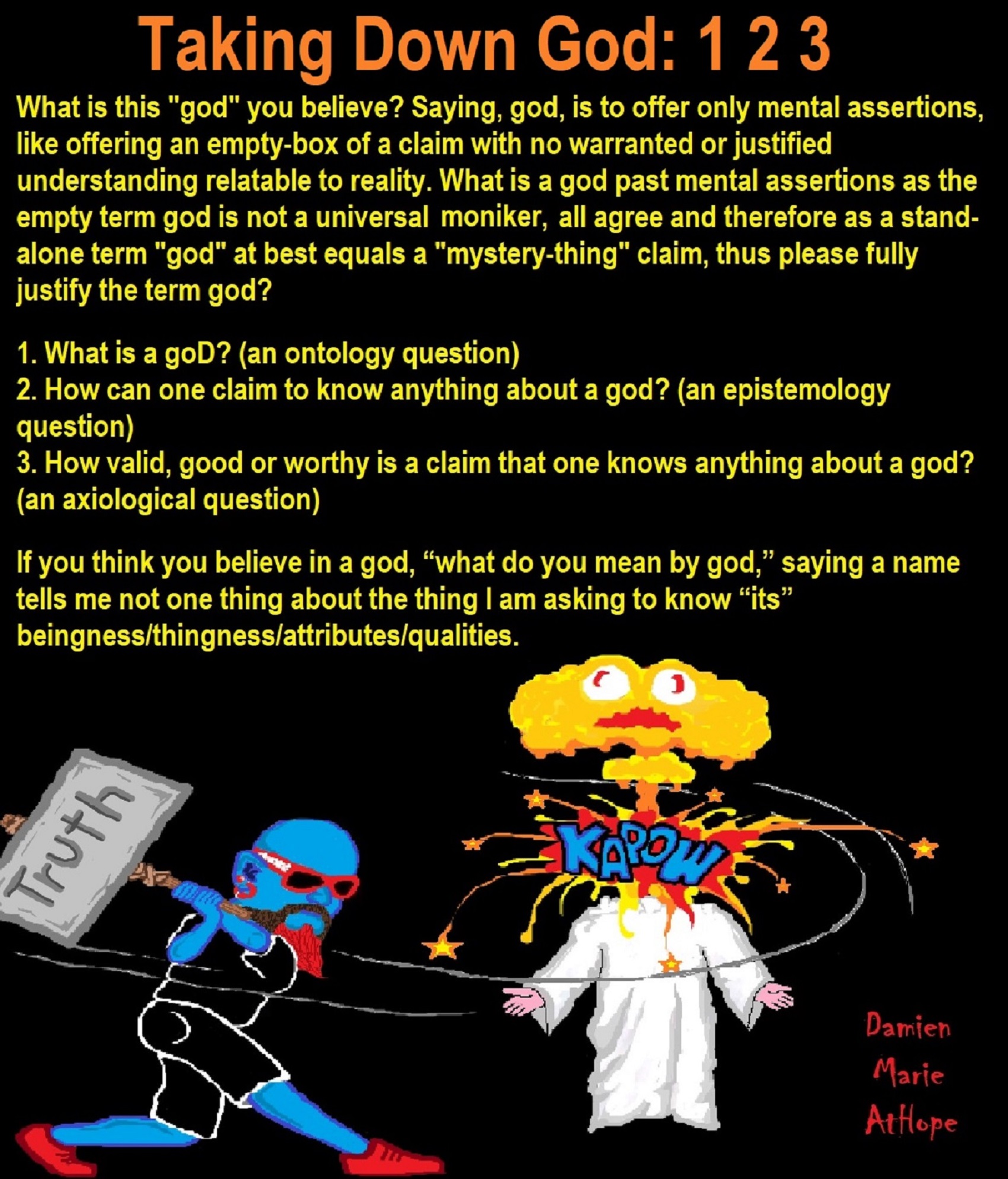
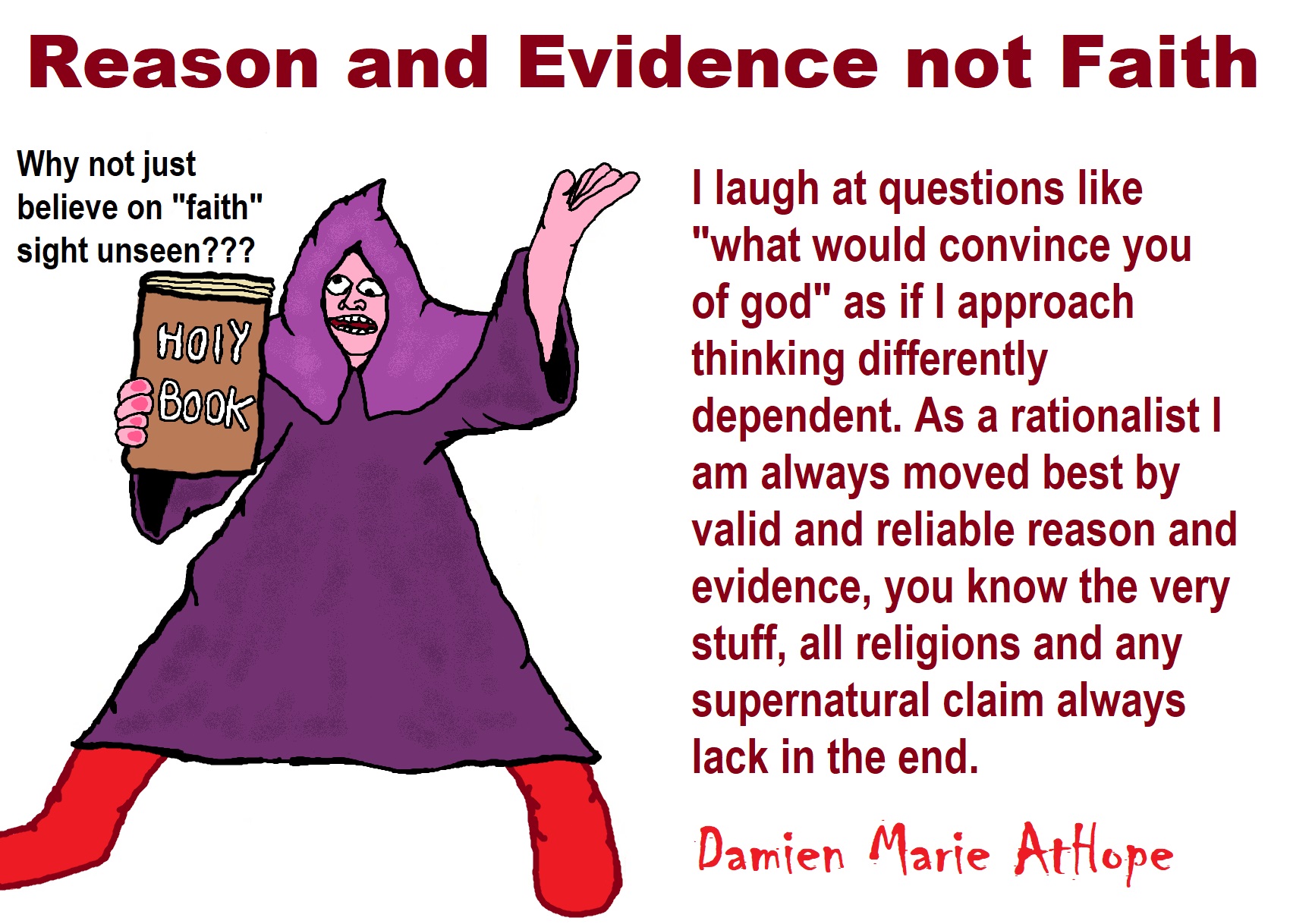

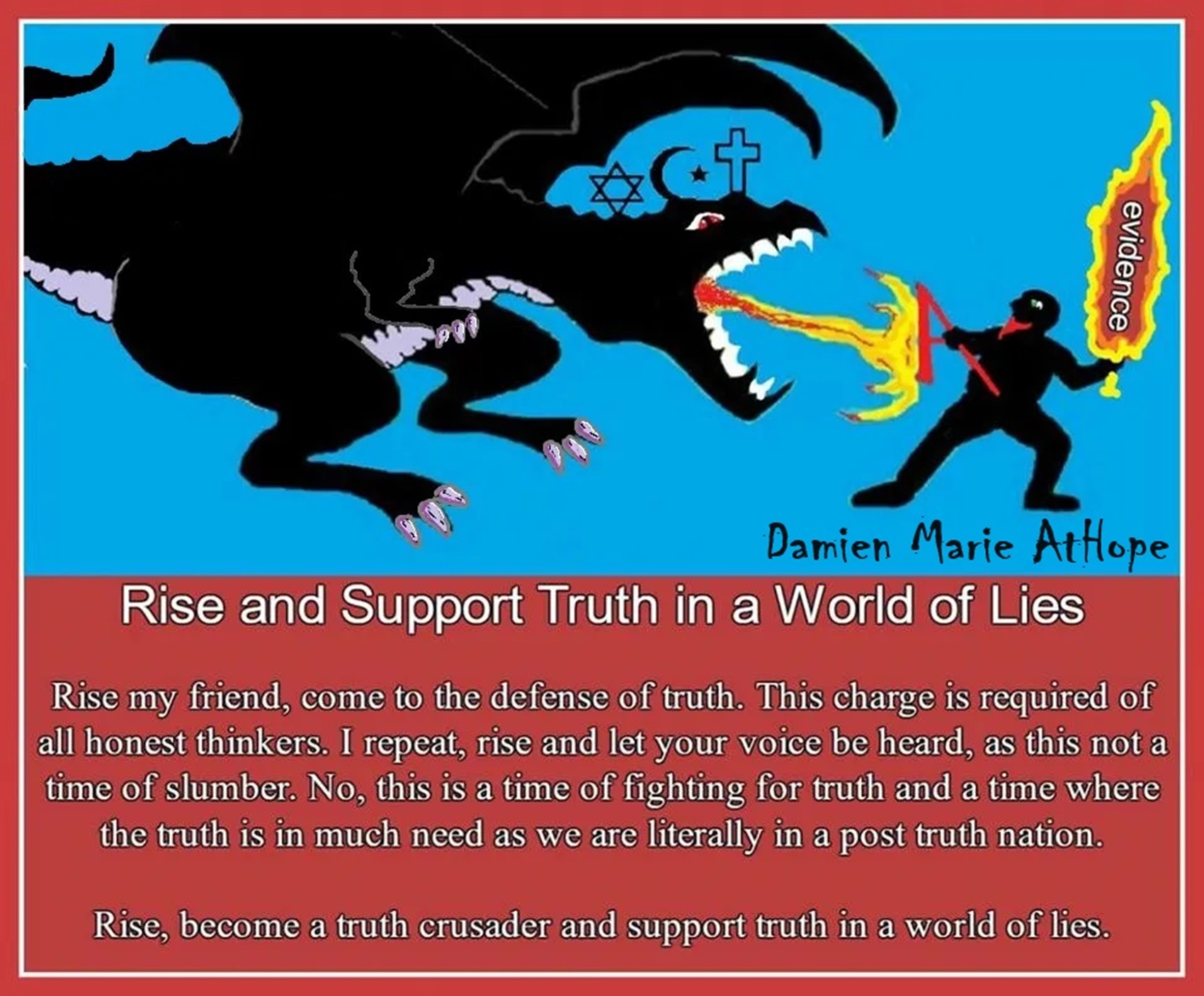

“Theists, there has to be a god, as something can not come from nothing.”
Well, thus something (unknown) happened and then there was something. This does not tell us what the something that may have been involved with something coming from nothing. A supposed first cause, thus something (unknown) happened and then there was something is not an open invitation to claim it as known, neither is it justified to call or label such an unknown as anything, especially an unsubstantiated magical thinking belief born of mythology and religious storytelling.


While hallucinogens are associated with shamanism, it is alcohol that is associated with paganism.
The Atheist-Humanist-Leftist Revolutionaries Shows in the prehistory series:
Show two: Pre-animism 300,000 years old and animism 100,000 years old: related to “Anarchism and Socialism”
Show tree: Totemism 50,000 years old: related to “Anarchism and Socialism”
Show four: Shamanism 30,000 years old: related to “Anarchism and Socialism”
Show five: Paganism 12,000 years old: related to “Anarchism and Socialism”
Show six: Emergence of hierarchy, sexism, slavery, and the new male god dominance: Paganism 7,000-5,000 years old: related to “Anarchism and Socialism” (Capitalism) (World War 0) Elite and their slaves!
Prehistory: related to “Anarchism and Socialism” the division of labor, power, rights, and recourses: VIDEO
Pre-animism 300,000 years old and animism 100,000 years old: related to “Anarchism and Socialism”: VIDEO
Totemism 50,000 years old: related to “Anarchism and Socialism”: VIDEO
Shamanism 30,000 years old: related to “Anarchism and Socialism”: VIDEO
Paganism 12,000 years old: related to “Anarchism and Socialism” (Pre-Capitalism): VIDEO
Paganism 7,000-5,000 years old: related to “Anarchism and Socialism” (Capitalism) (World War 0) Elite and their slaves: VIEDO
Paganism 5,000 years old: progressed organized religion and the state: related to “Anarchism and Socialism” (Kings and the Rise of the State): VIEDO
Paganism 4,000 years old: related to “Anarchism and Socialism” (First Moralistic gods, then the Origin time of Monotheism): VIEDO
I do not hate simply because I challenge and expose myths or lies any more than others being thought of as loving simply because of the protection and hiding from challenge their favored myths or lies.
The truth is best championed in the sunlight of challenge.
An archaeologist once said to me “Damien religion and culture are very different”
My response, So are you saying that was always that way, such as would you say Native Americans’ cultures are separate from their religions? And do you think it always was the way you believe?
I had said that religion was a cultural product. That is still how I see it and there are other archaeologists that think close to me as well. Gods too are the myths of cultures that did not understand science or the world around them, seeing magic/supernatural everywhere.
I personally think there is a goddess and not enough evidence to support a male god at Çatalhöyük but if there was both a male and female god and goddess then I know the kind of gods they were like Proto-Indo-European mythology.
This series idea was addressed in, Anarchist Teaching as Free Public Education or Free Education in the Public: VIDEO
Our 12 video series: Organized Oppression: Mesopotamian State Force and the Politics of power (9,000-4,000 years ago), is adapted from: The Complete and Concise History of the Sumerians and Early Bronze Age Mesopotamia (7000-2000 BC): https://www.youtube.com/watch?v=szFjxmY7jQA by “History with Cy“
Show #1: Mesopotamian State Force and the Politics of Power (Samarra, Halaf, Ubaid)
Show #2: Mesopotamian State Force and the Politics of Power
Show #3: Mesopotamian State Force and the Politics of Power (Uruk and the First Cities)
Show #4: Mesopotamian State Force and the Politics of Power (First Kings)
Show #5: Mesopotamian State Force and the Politics of Power (Early Dynastic Period)
Show #6: Mesopotamian State Force and the Politics of Power
Show #7: Mesopotamian State Force and the Politics of Power (Sargon and Akkadian Rule)
Show #9: Mesopotamian State Force and the Politics of Power (Gudea of Lagash and Utu-hegal)
Show #12: Mesopotamian State Force and the Politics of Power (Aftermath and Legacy of Sumer)

The “Atheist-Humanist-Leftist Revolutionaries”
Cory Johnston ☭ Ⓐ Atheist Leftist @Skepticallefty & I (Damien Marie AtHope) @AthopeMarie (my YouTube & related blog) are working jointly in atheist, antitheist, antireligionist, antifascist, anarchist, socialist, and humanist endeavors in our videos together, generally, every other Saturday.
Why Does Power Bring Responsibility?
Think, how often is it the powerless that start wars, oppress others, or commit genocide? So, I guess the question is to us all, to ask, how can power not carry responsibility in a humanity concept? I know I see the deep ethical responsibility that if there is power their must be a humanistic responsibility of ethical and empathic stewardship of that power. Will I be brave enough to be kind? Will I possess enough courage to be compassionate? Will my valor reach its height of empathy? I as everyone, earns our justified respect by our actions, that are good, ethical, just, protecting, and kind. Do I have enough self-respect to put my love for humanity’s flushing, over being brought down by some of its bad actors? May we all be the ones doing good actions in the world, to help human flourishing.
I create the world I want to live in, striving for flourishing. Which is not a place but a positive potential involvement and promotion; a life of humanist goal precision. To master oneself, also means mastering positive prosocial behaviors needed for human flourishing. I may have lost a god myth as an atheist, but I am happy to tell you, my friend, it is exactly because of that, leaving the mental terrorizer, god belief, that I truly regained my connected ethical as well as kind humanity.
Cory and I will talk about prehistory and theism, addressing the relevance to atheism, anarchism, and socialism.
At the same time as the rise of the male god, 7,000 years ago, there was also the very time there was the rise of violence, war, and clans to kingdoms, then empires, then states. It is all connected back to 7,000 years ago, and it moved across the world.
Cory Johnston: https://damienmarieathope.com/2021/04/cory-johnston-mind-of-a-skeptical-leftist/?v=32aec8db952d
The Mind of a Skeptical Leftist (YouTube)
Cory Johnston: Mind of a Skeptical Leftist @Skepticallefty
The Mind of a Skeptical Leftist By Cory Johnston: “Promoting critical thinking, social justice, and left-wing politics by covering current events and talking to a variety of people. Cory Johnston has been thoughtfully talking to people and attempting to promote critical thinking, social justice, and left-wing politics.” http://anchor.fm/skepticalleft
Cory needs our support. We rise by helping each other.
Cory Johnston ☭ Ⓐ @Skepticallefty Evidence-based atheist leftist (he/him) Producer, host, and co-host of 4 podcasts @skeptarchy @skpoliticspod and @AthopeMarie
Damien Marie AtHope (“At Hope”) Axiological Atheist, Anti-theist, Anti-religionist, Secular Humanist. Rationalist, Writer, Artist, Poet, Philosopher, Advocate, Activist, Psychology, and Armchair Archaeology/Anthropology/Historian.
Damien is interested in: Freedom, Liberty, Justice, Equality, Ethics, Humanism, Science, Atheism, Antiteism, Antireligionism, Ignosticism, Left-Libertarianism, Anarchism, Socialism, Mutualism, Axiology, Metaphysics, LGBTQI, Philosophy, Advocacy, Activism, Mental Health, Psychology, Archaeology, Social Work, Sexual Rights, Marriage Rights, Woman’s Rights, Gender Rights, Child Rights, Secular Rights, Race Equality, Ageism/Disability Equality, Etc. And a far-leftist, “Anarcho-Humanist.”
I am not a good fit in the atheist movement that is mostly pro-capitalist, I am anti-capitalist. Mostly pro-skeptic, I am a rationalist not valuing skepticism. Mostly pro-agnostic, I am anti-agnostic. Mostly limited to anti-Abrahamic religions, I am an anti-religionist.
To me, the “male god” seems to have either emerged or become prominent around 7,000 years ago, whereas the now favored monotheism “male god” is more like 4,000 years ago or so. To me, the “female goddess” seems to have either emerged or become prominent around 11,000-10,000 years ago or so, losing the majority of its once prominence around 2,000 years ago due largely to the now favored monotheism “male god” that grow in prominence after 4,000 years ago or so.
My Thought on the Evolution of Gods?
Animal protector deities from old totems/spirit animal beliefs come first to me, 13,000/12,000 years ago, then women as deities 11,000/10,000 years ago, then male gods around 7,000/8,000 years ago. Moralistic gods around 5,000/4,000 years ago, and monotheistic gods around 4,000/3,000 years ago.
To me, animal gods were likely first related to totemism animals around 13,000 to 12,000 years ago or older. Female as goddesses was next to me, 11,000 to 10,000 years ago or so with the emergence of agriculture. Then male gods come about 8,000 to 7,000 years ago with clan wars. Many monotheism-themed religions started in henotheism, emerging out of polytheism/paganism.

Damien Marie AtHope (Said as “At” “Hope”)/(Autodidact Polymath but not good at math):
Axiological Atheist, Anti-theist, Anti-religionist, Secular Humanist, Rationalist, Writer, Artist, Jeweler, Poet, “autodidact” Philosopher, schooled in Psychology, and “autodidact” Armchair Archaeology/Anthropology/Pre-Historian (Knowledgeable in the range of: 1 million to 5,000/4,000 years ago). I am an anarchist socialist politically. Reasons for or Types of Atheism
My Website, My Blog, & Short-writing or Quotes, My YouTube, Twitter: @AthopeMarie, and My Email: damien.marie.athope@gmail.com



